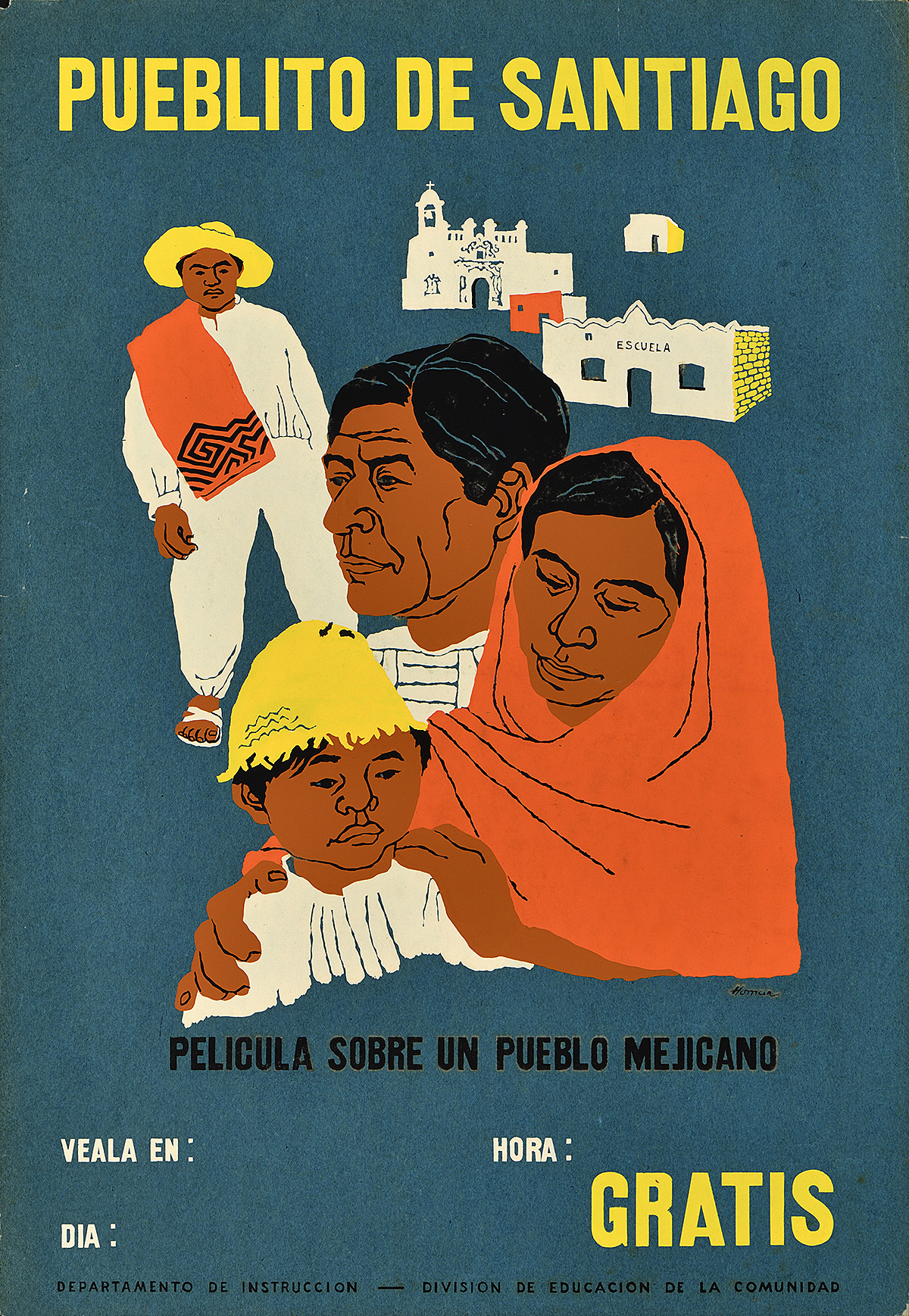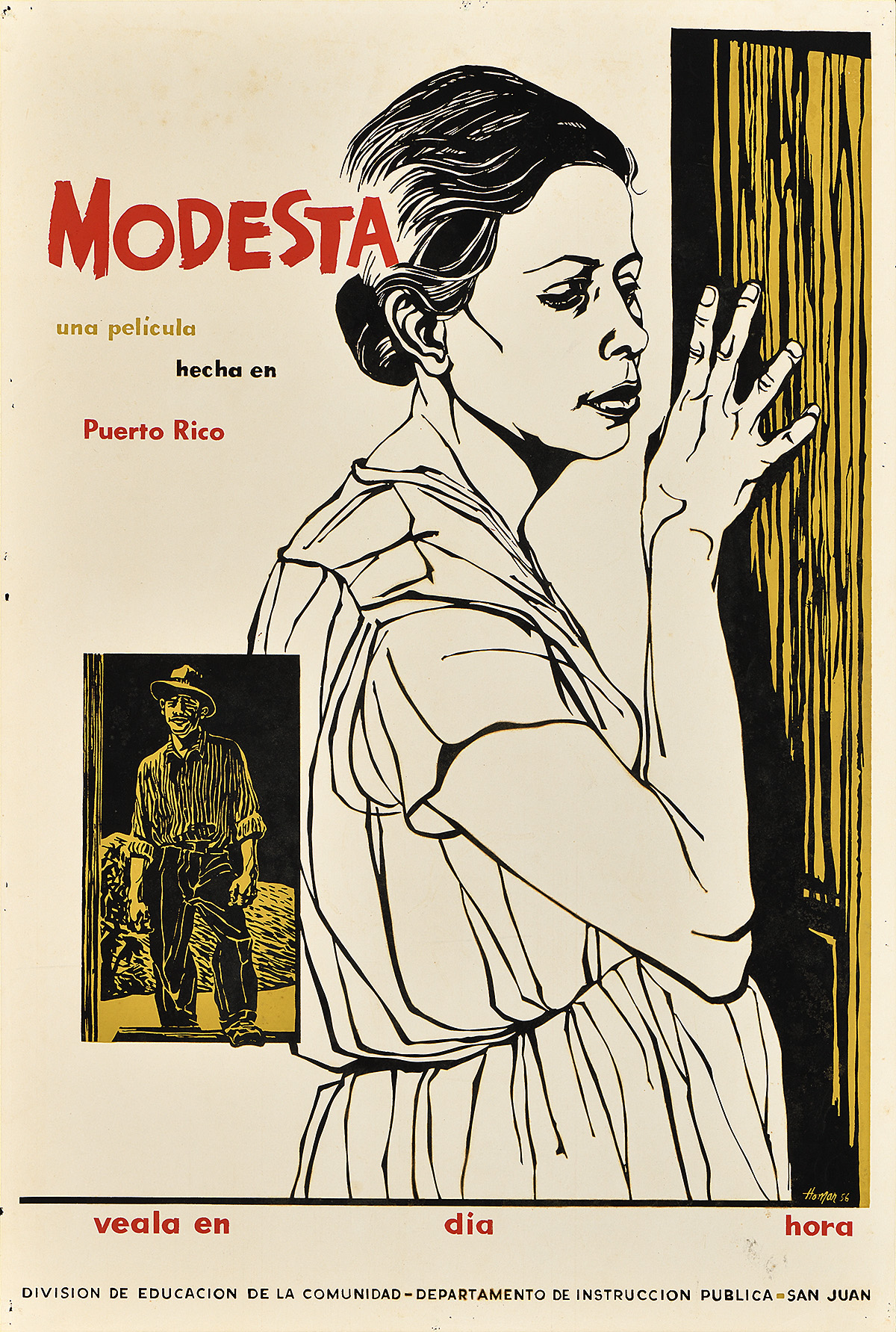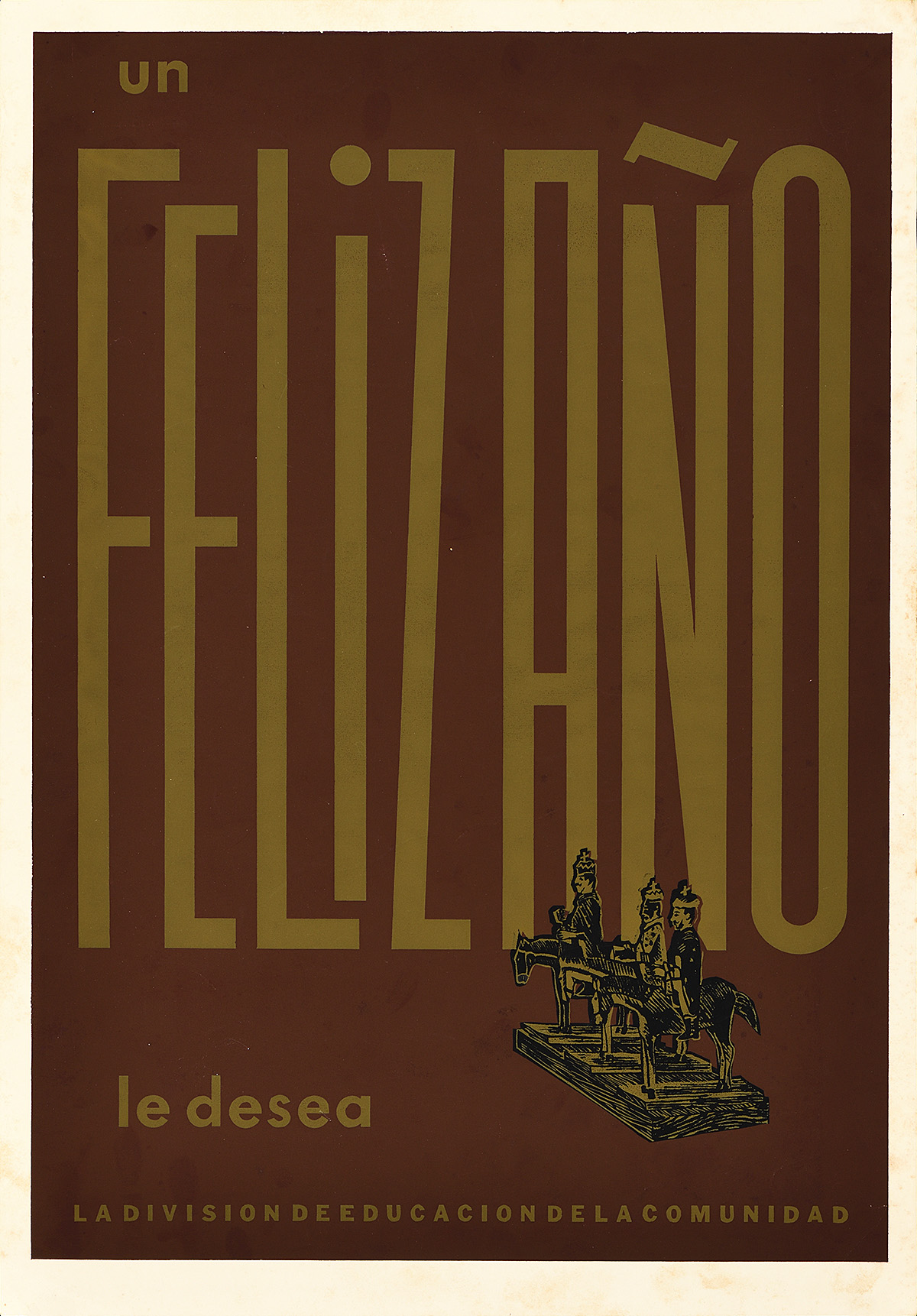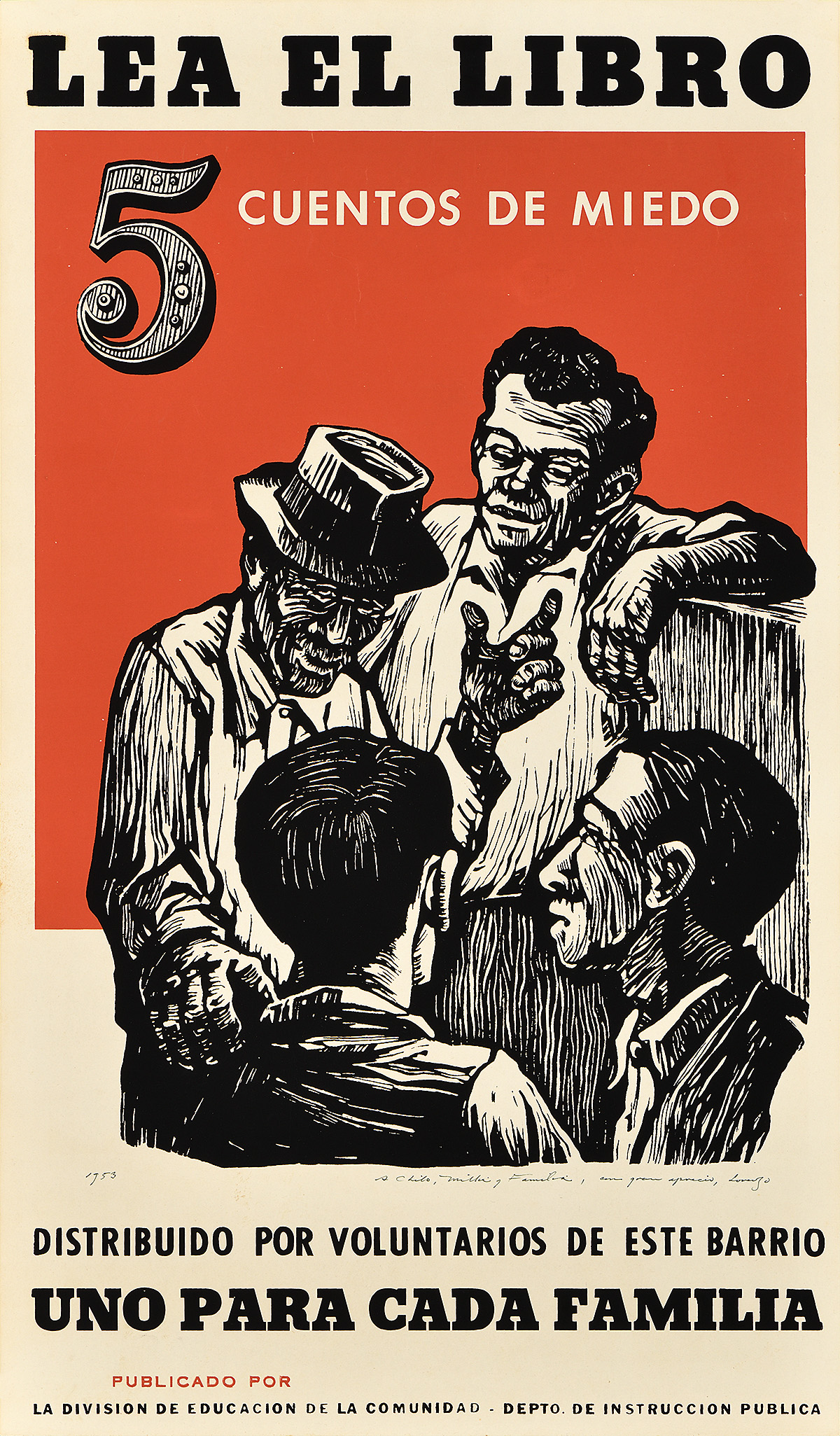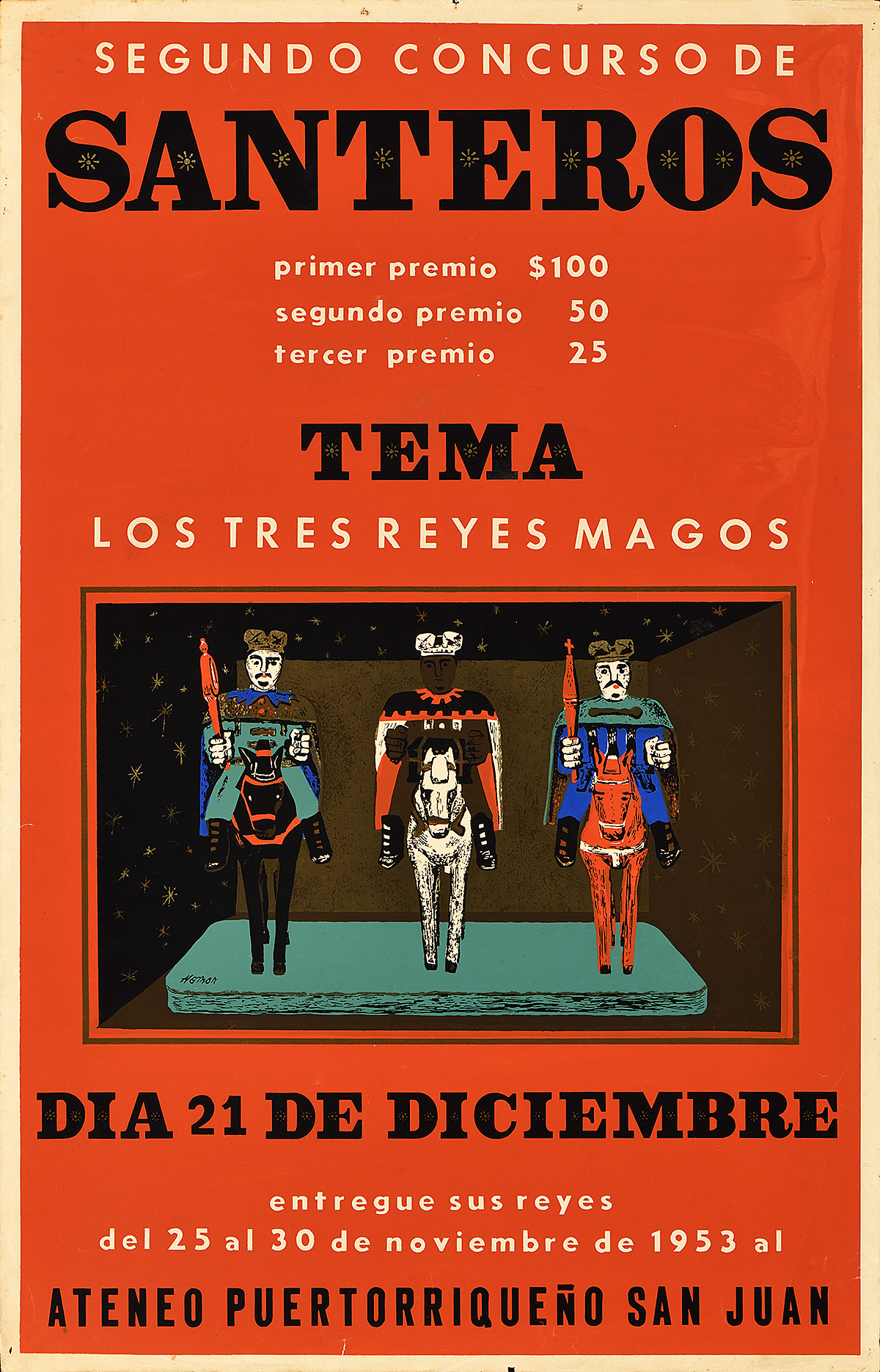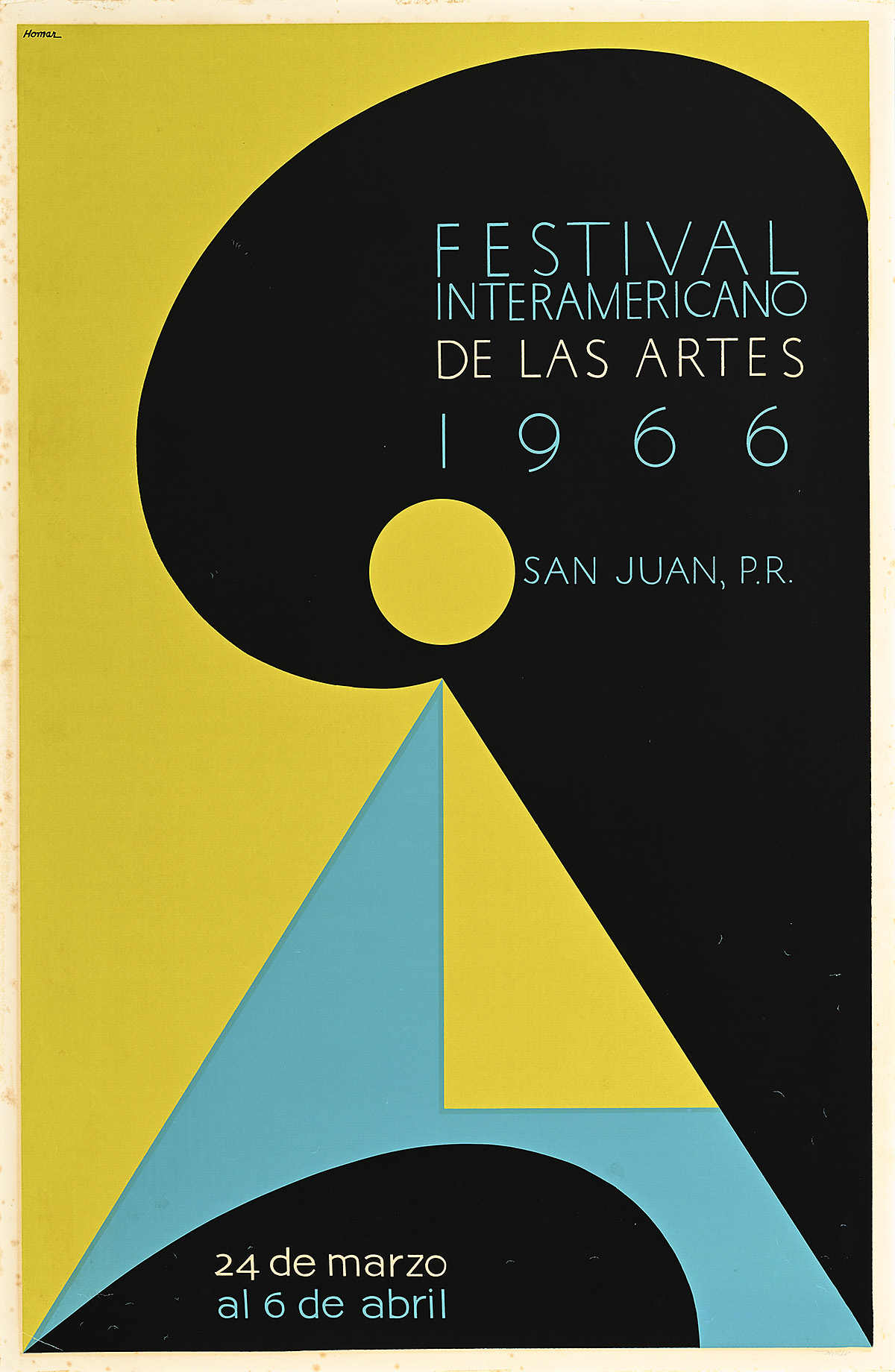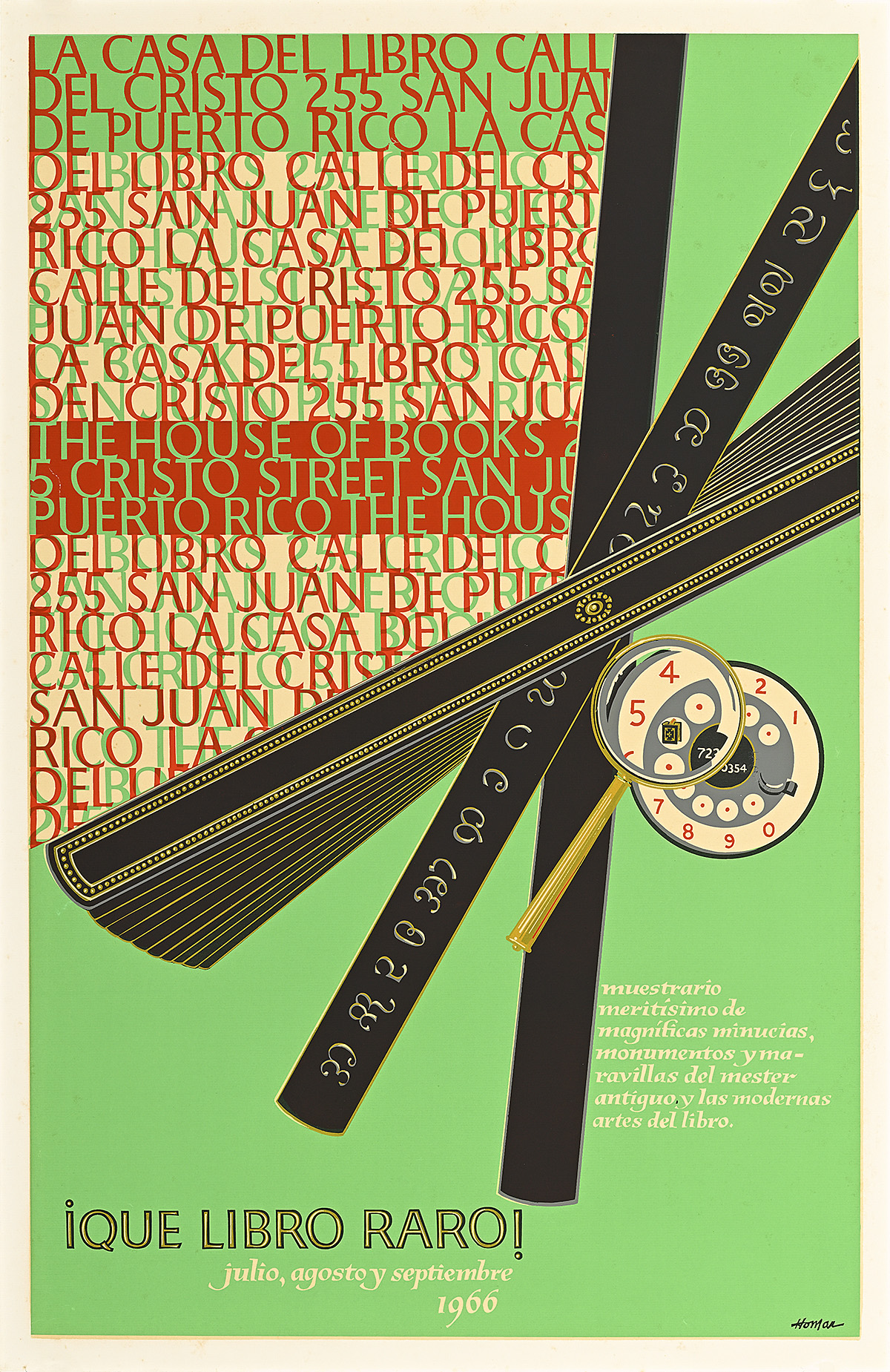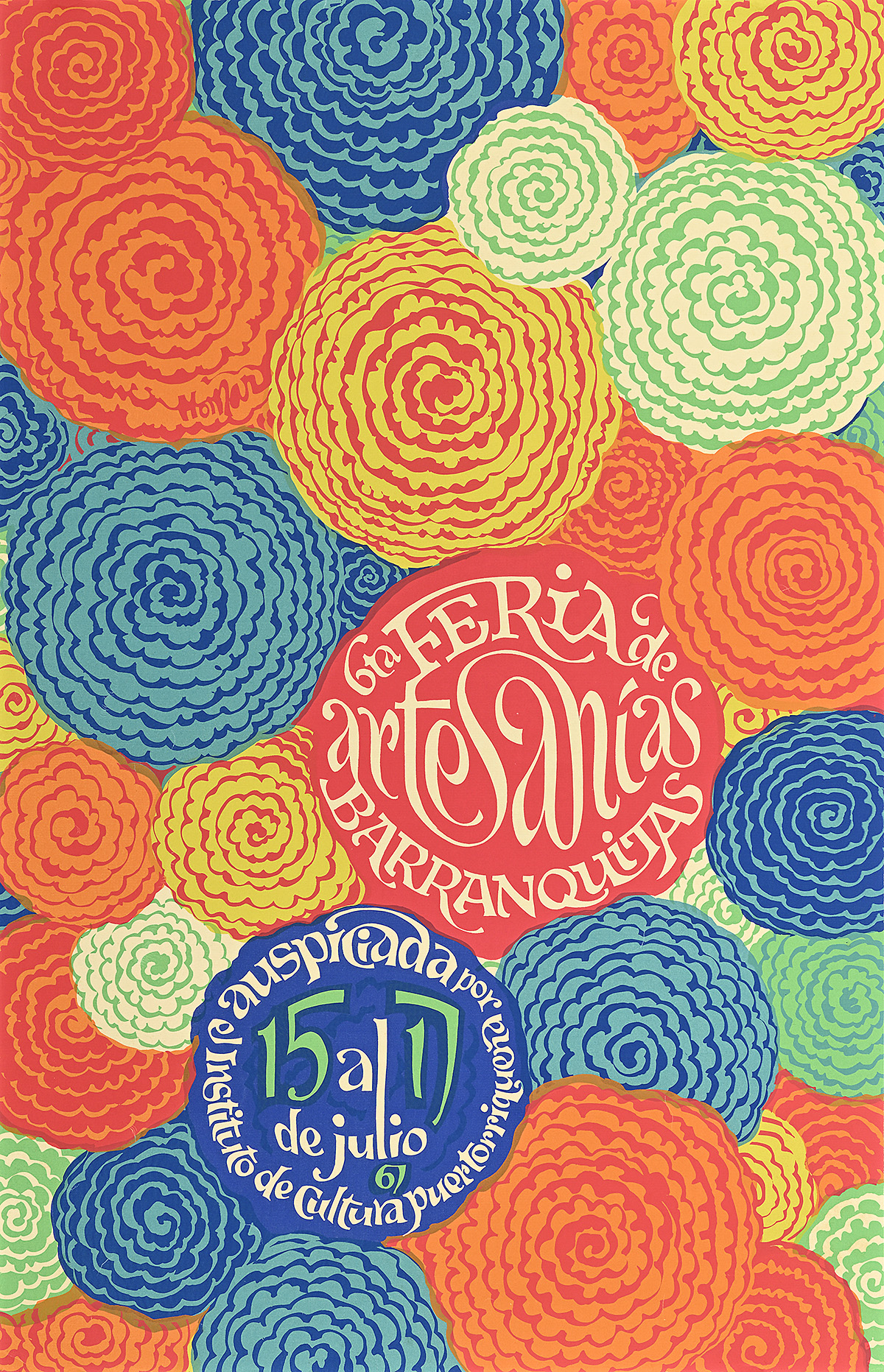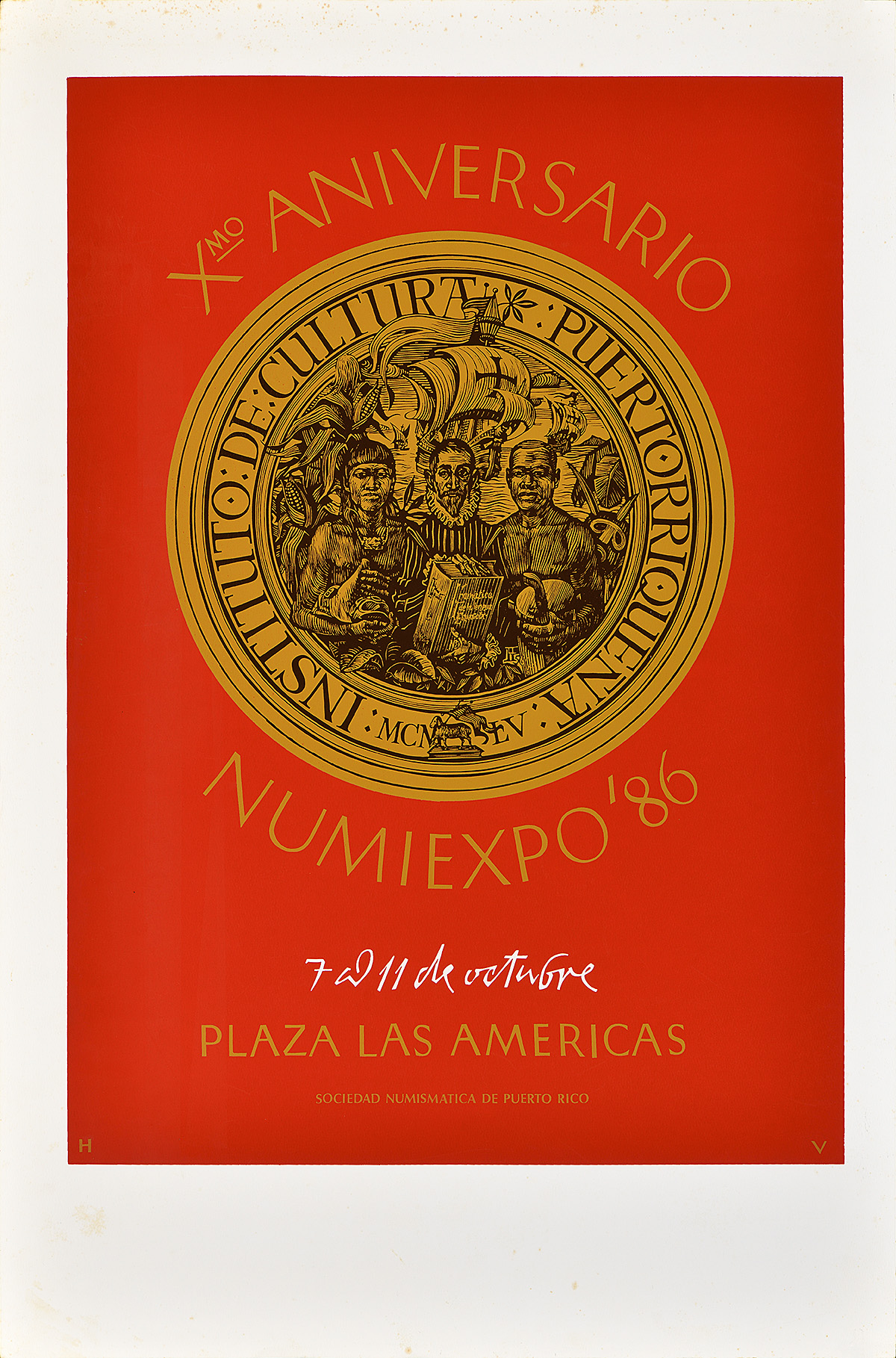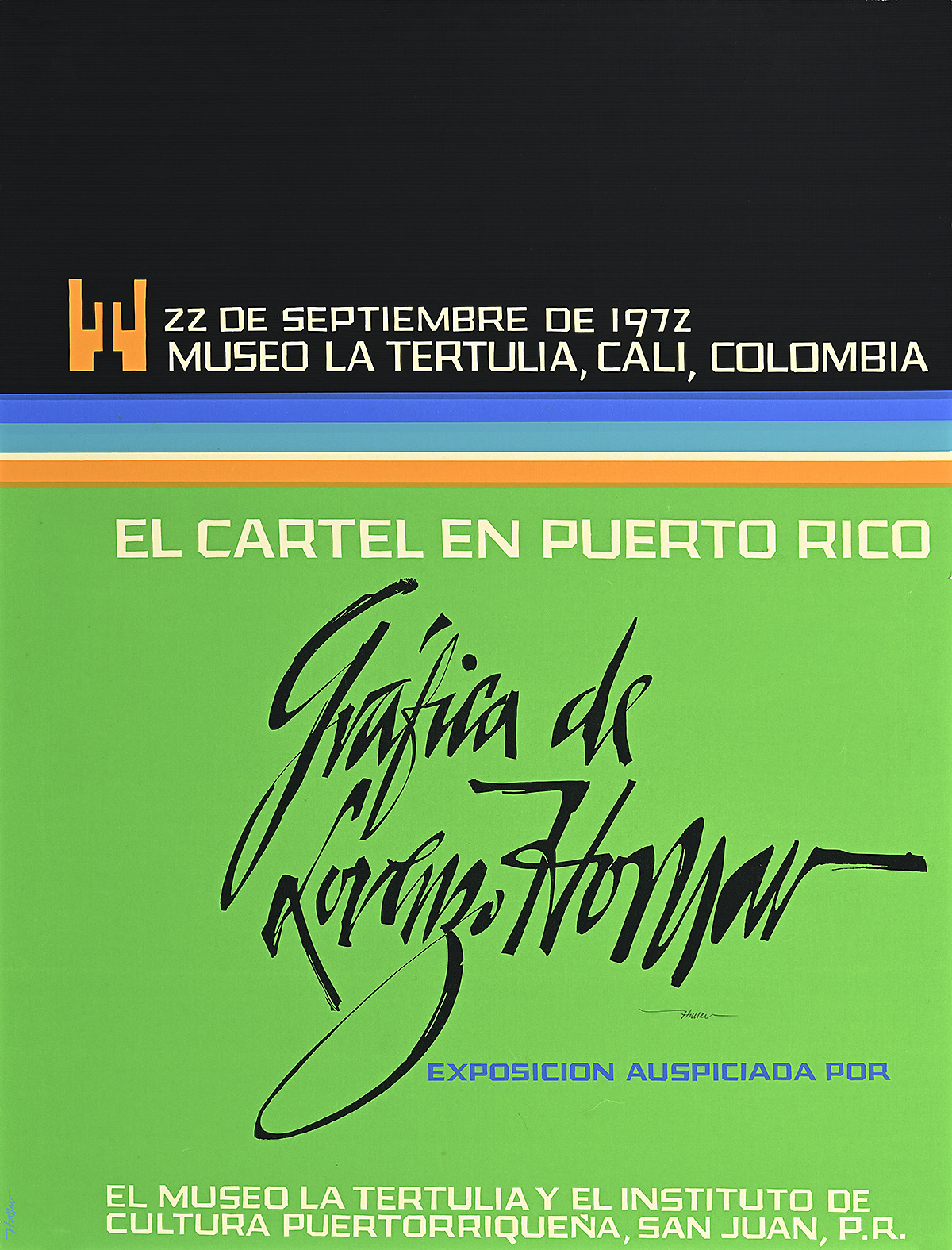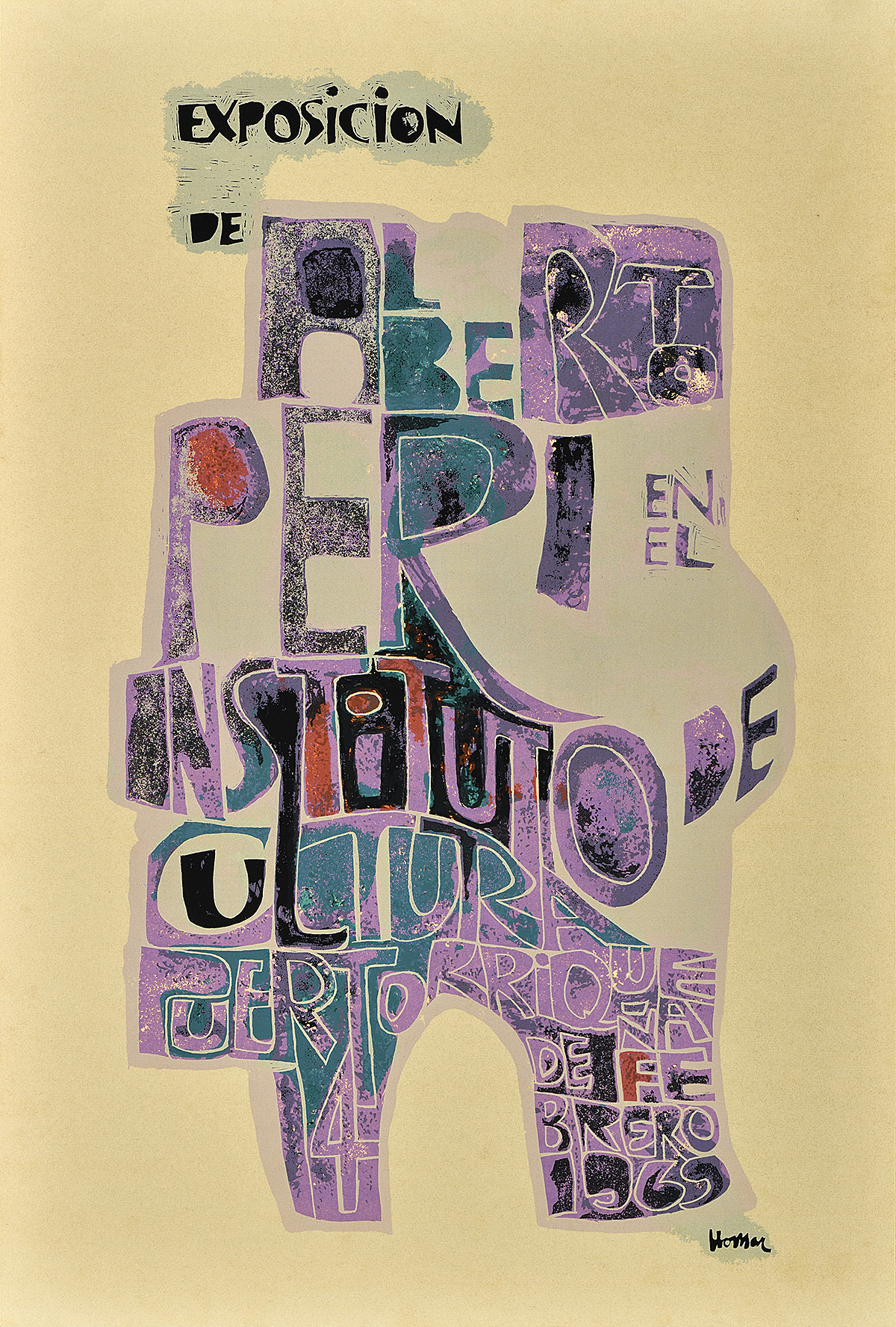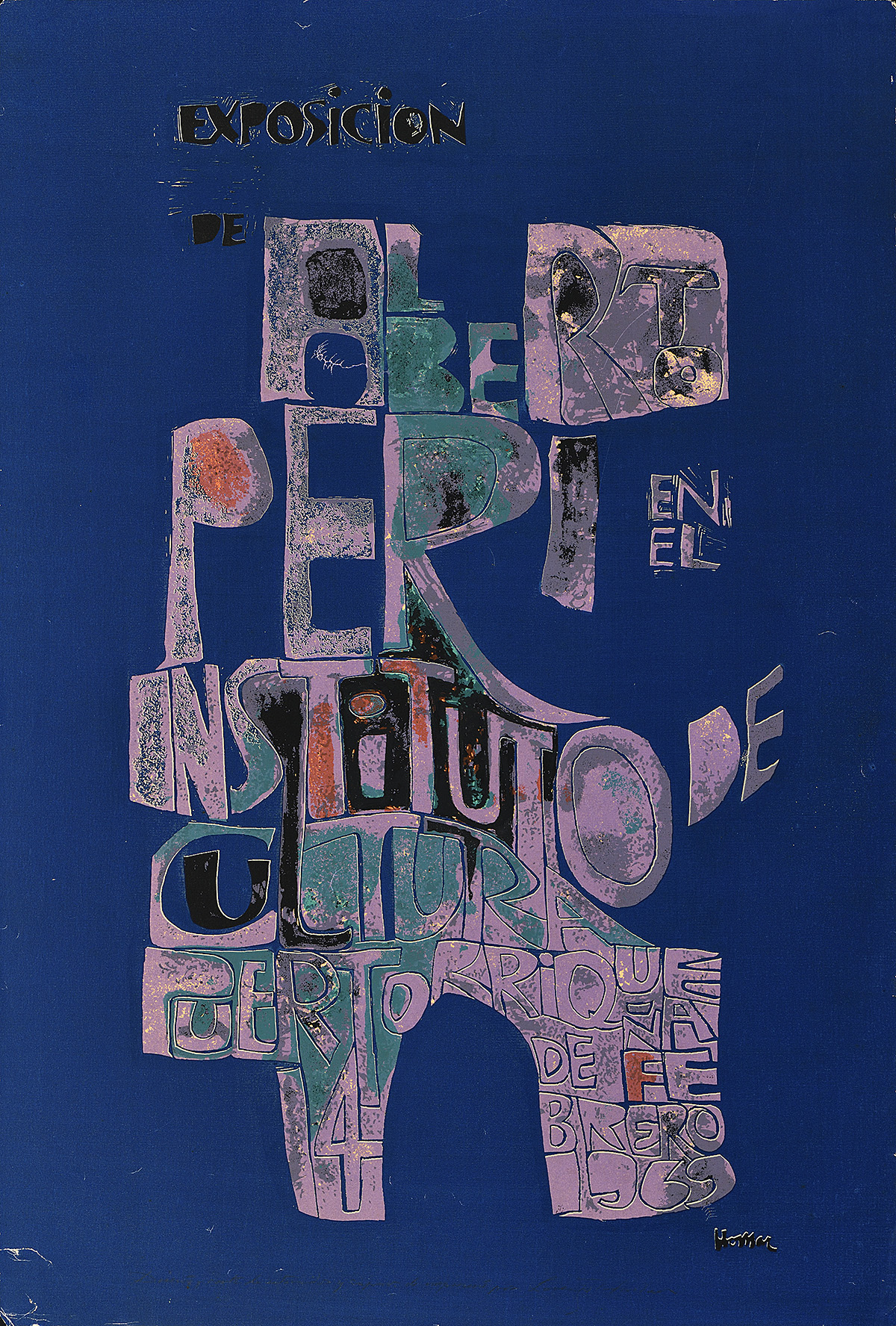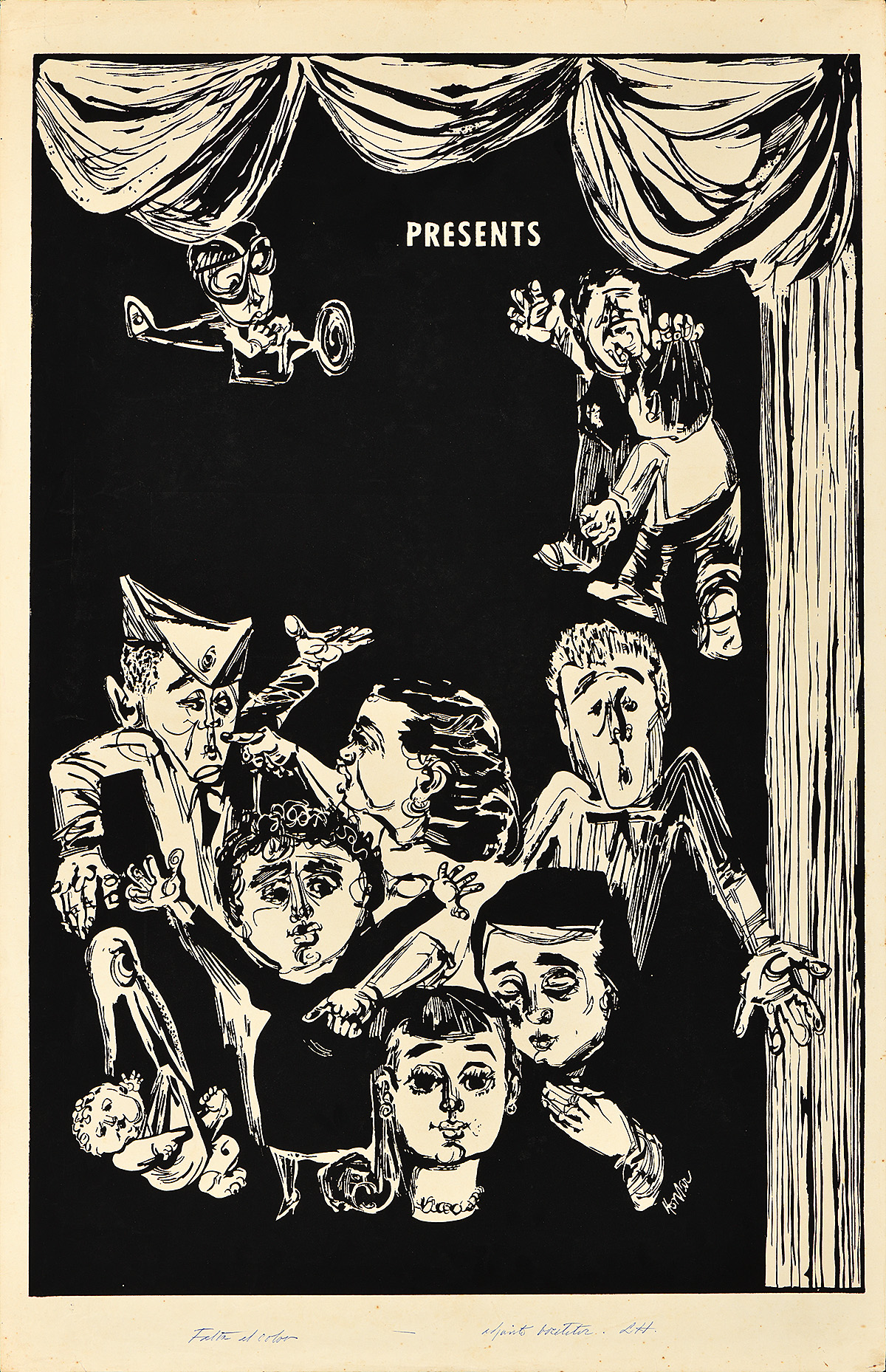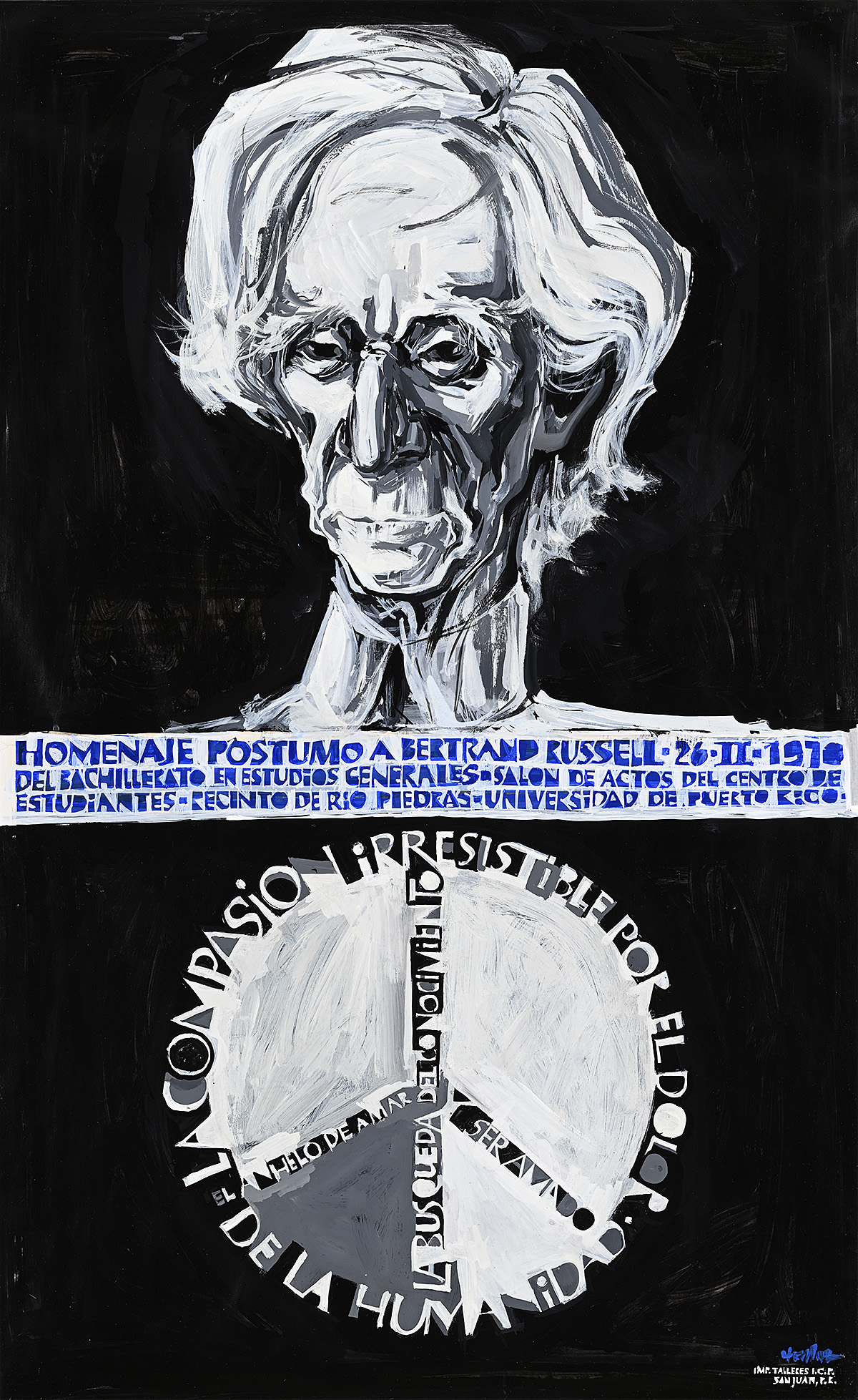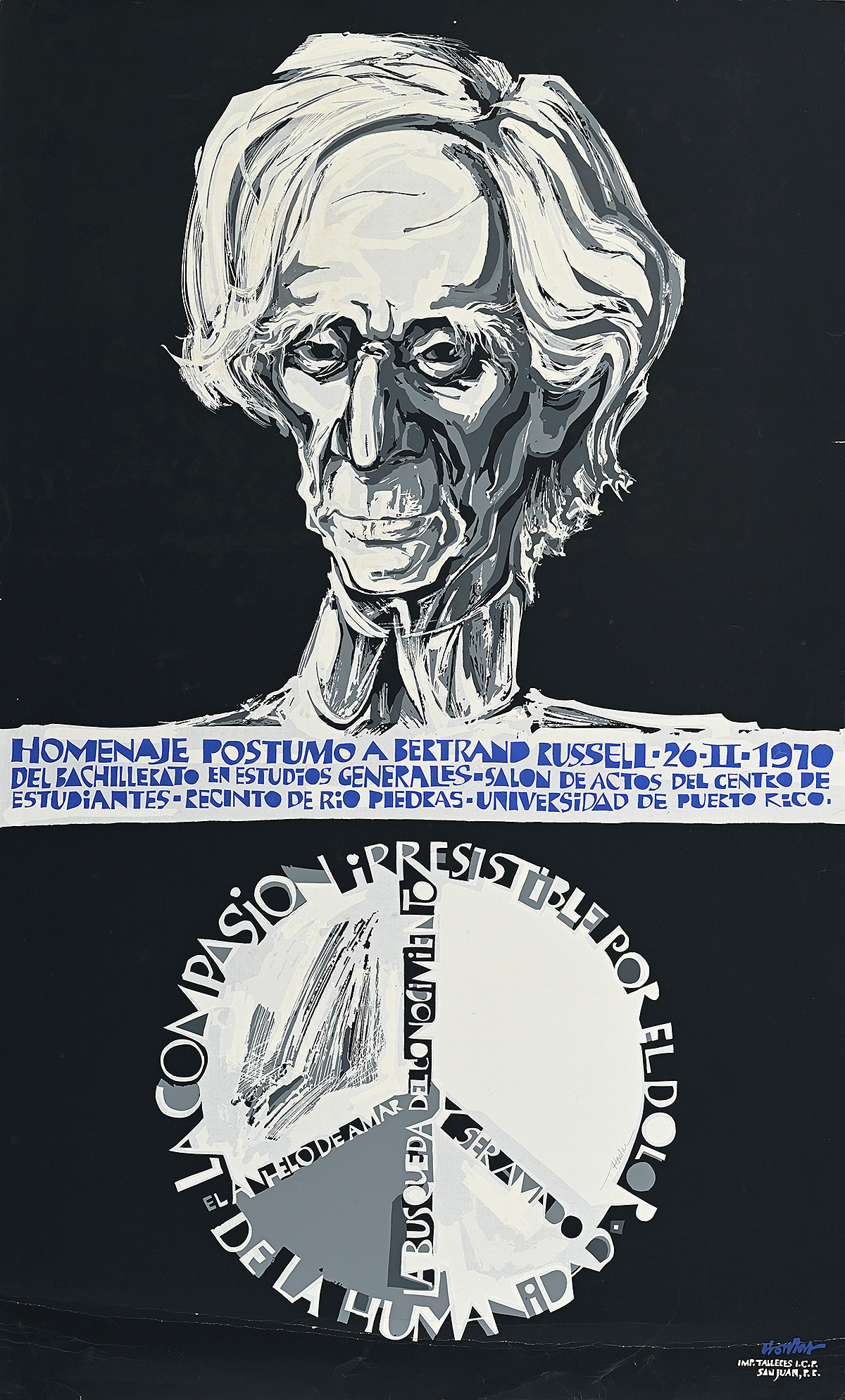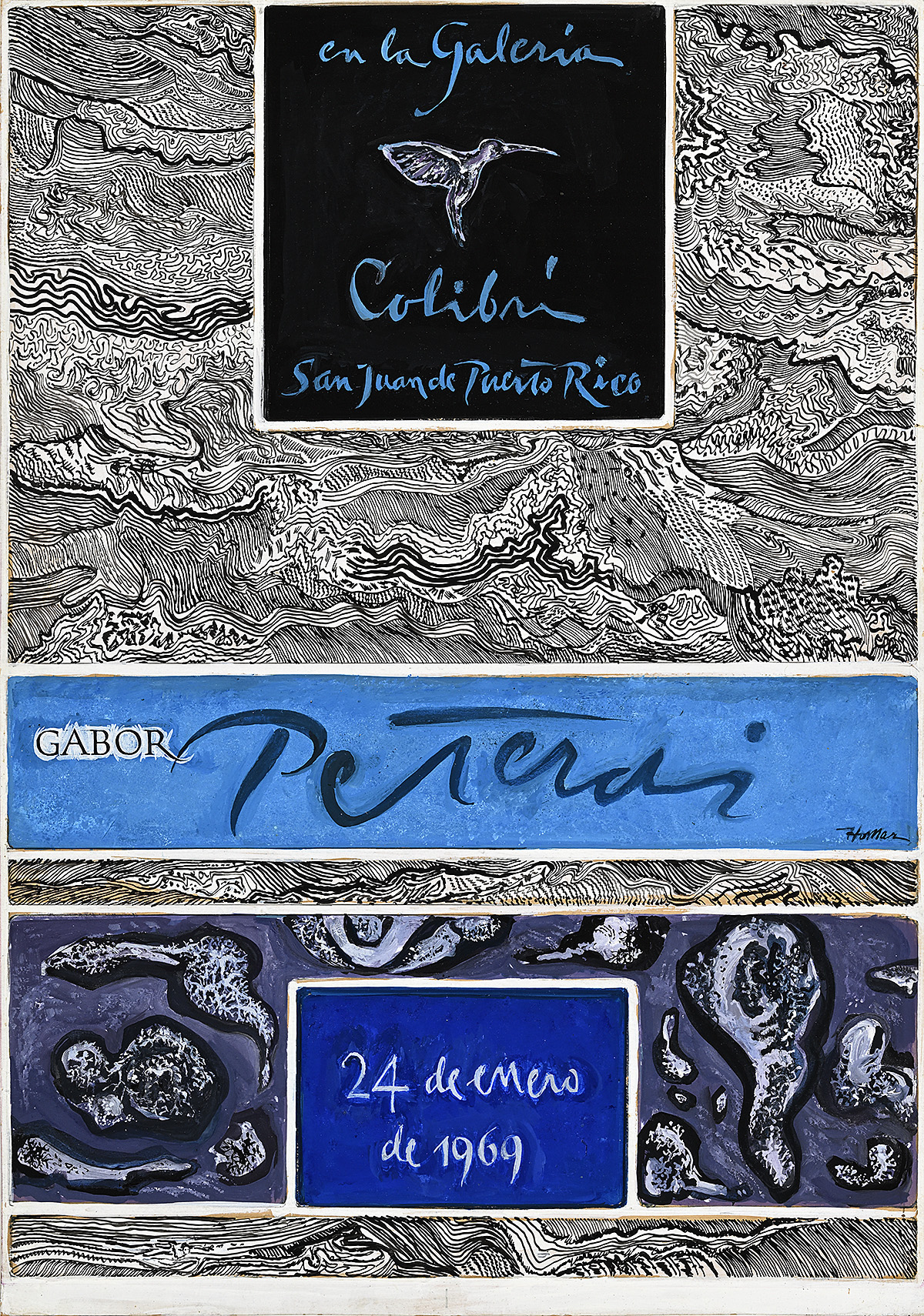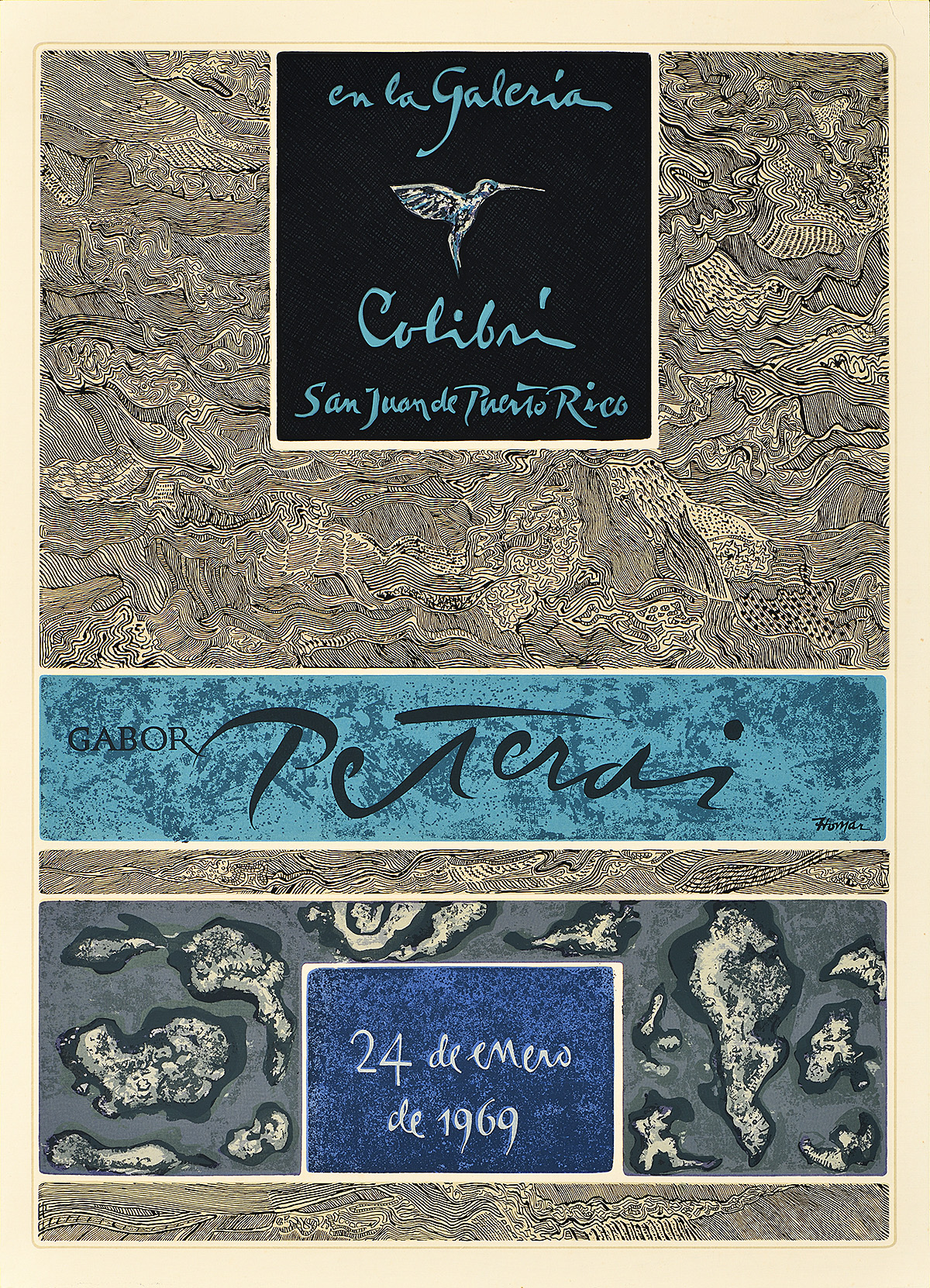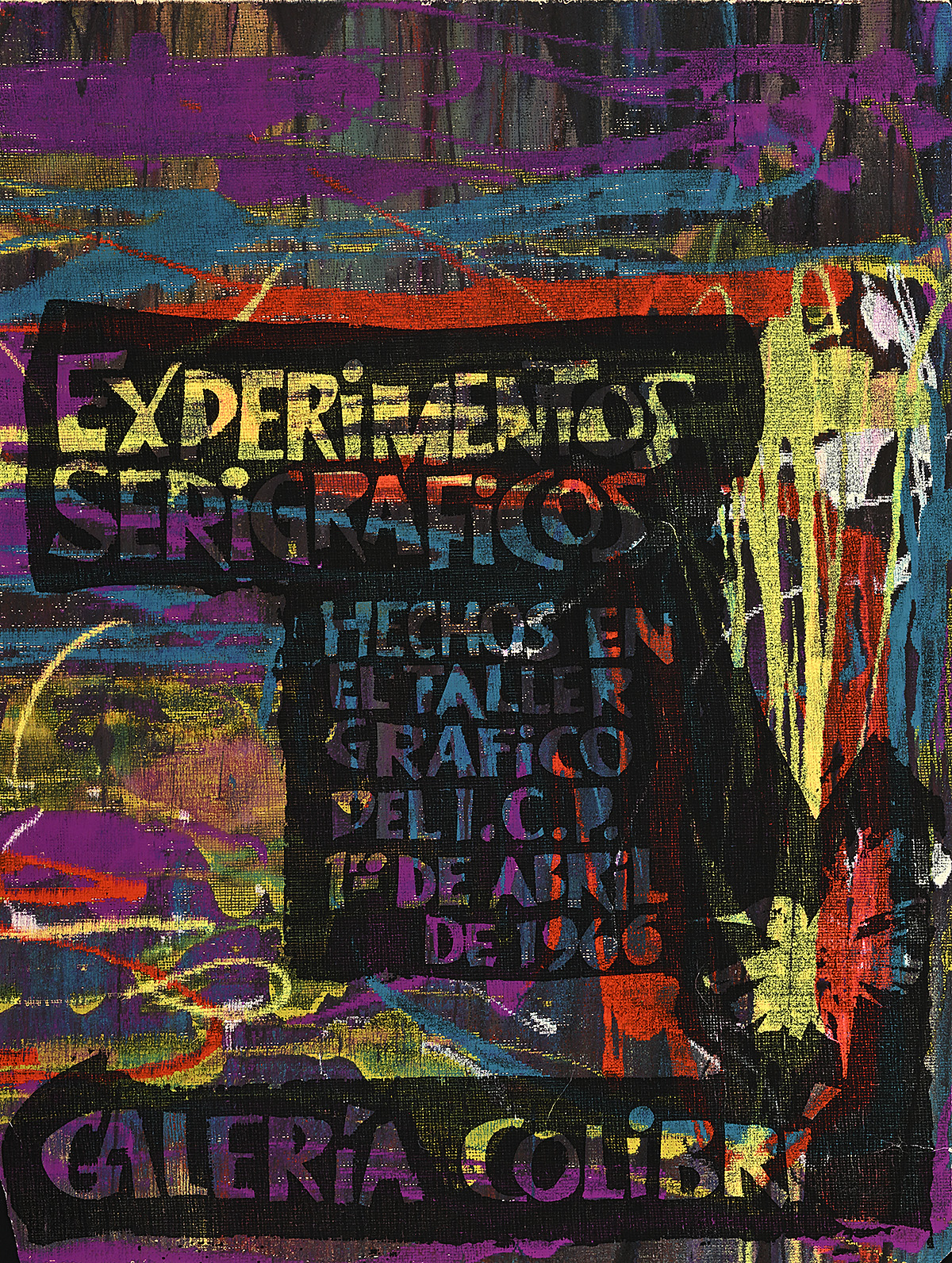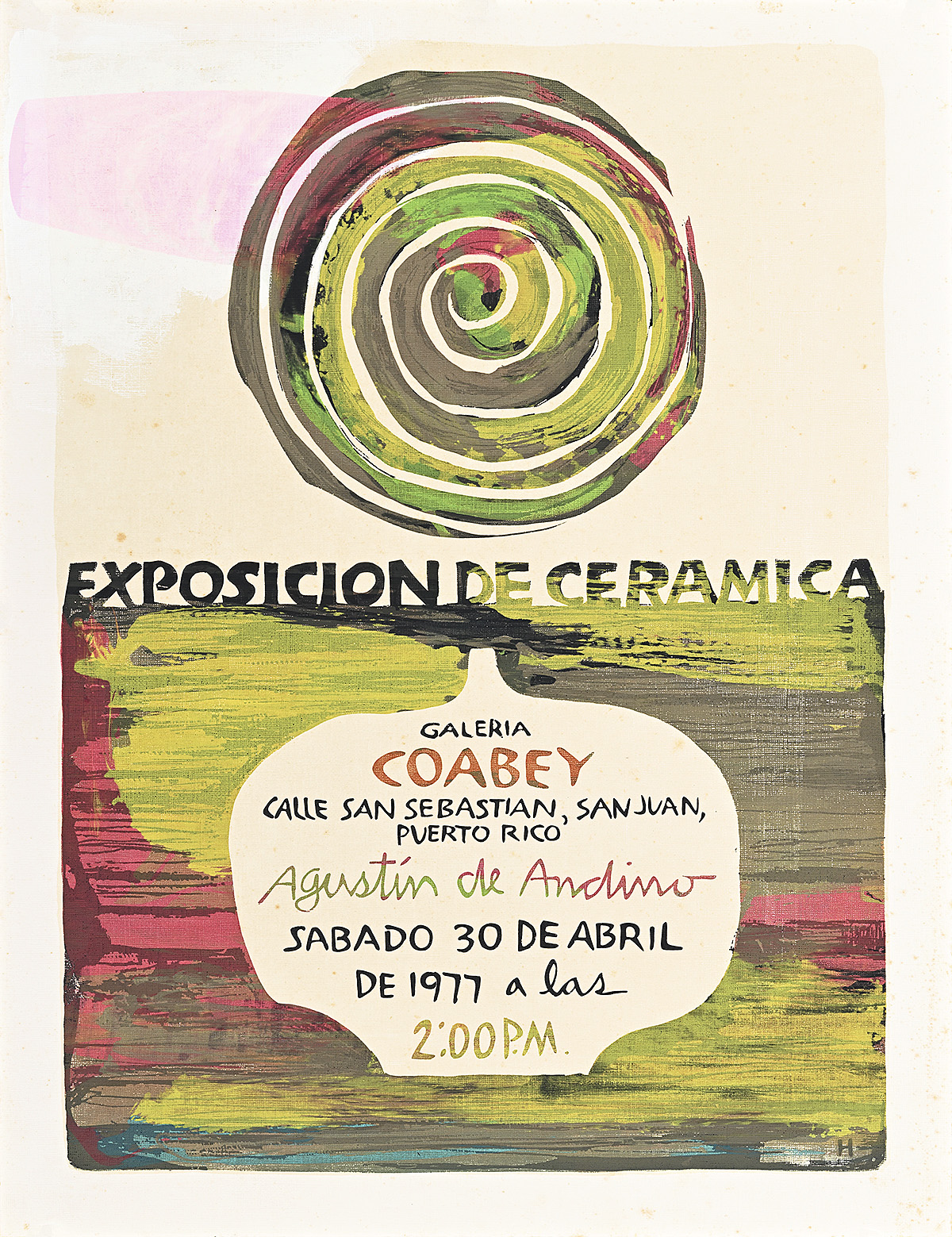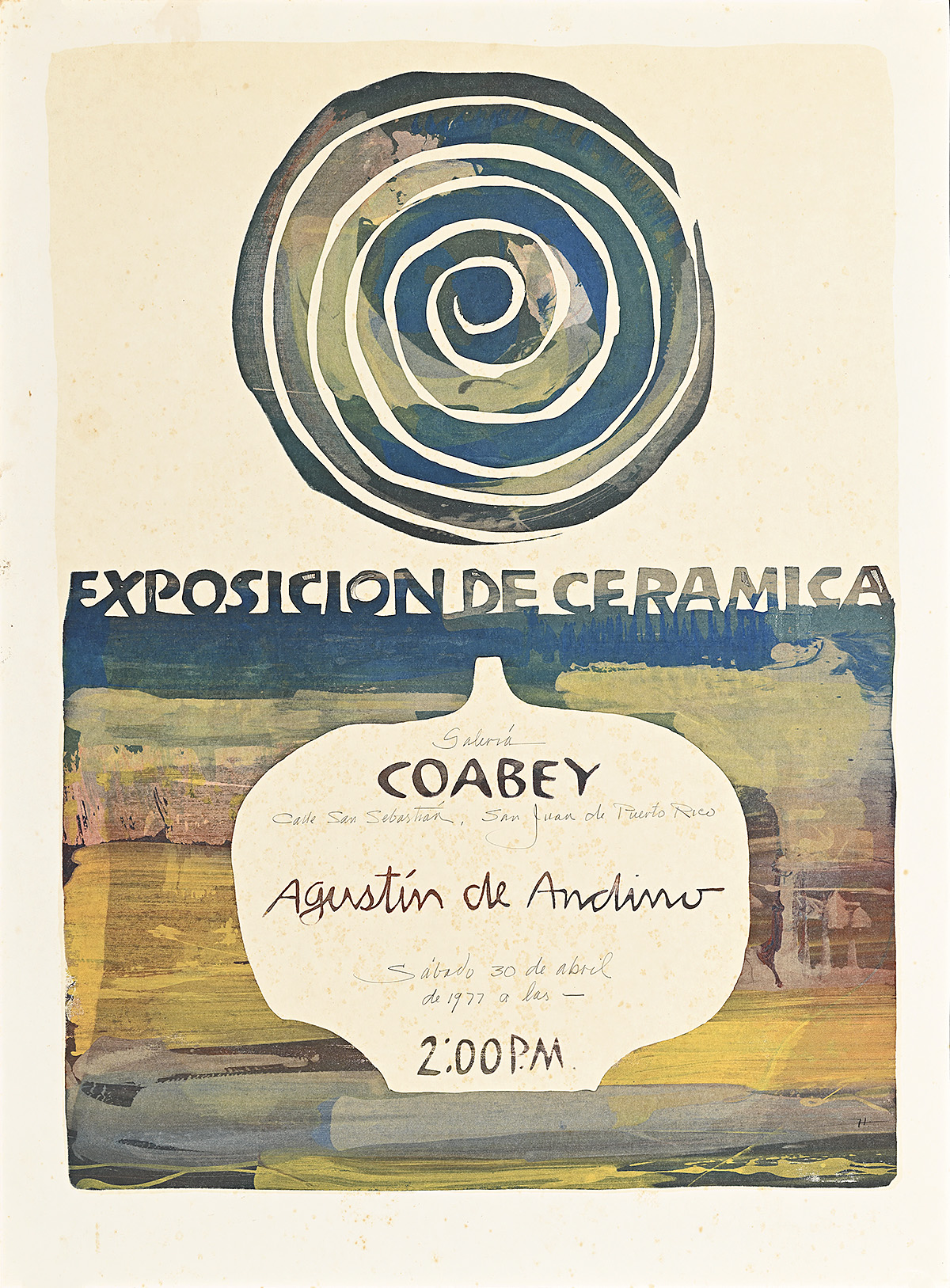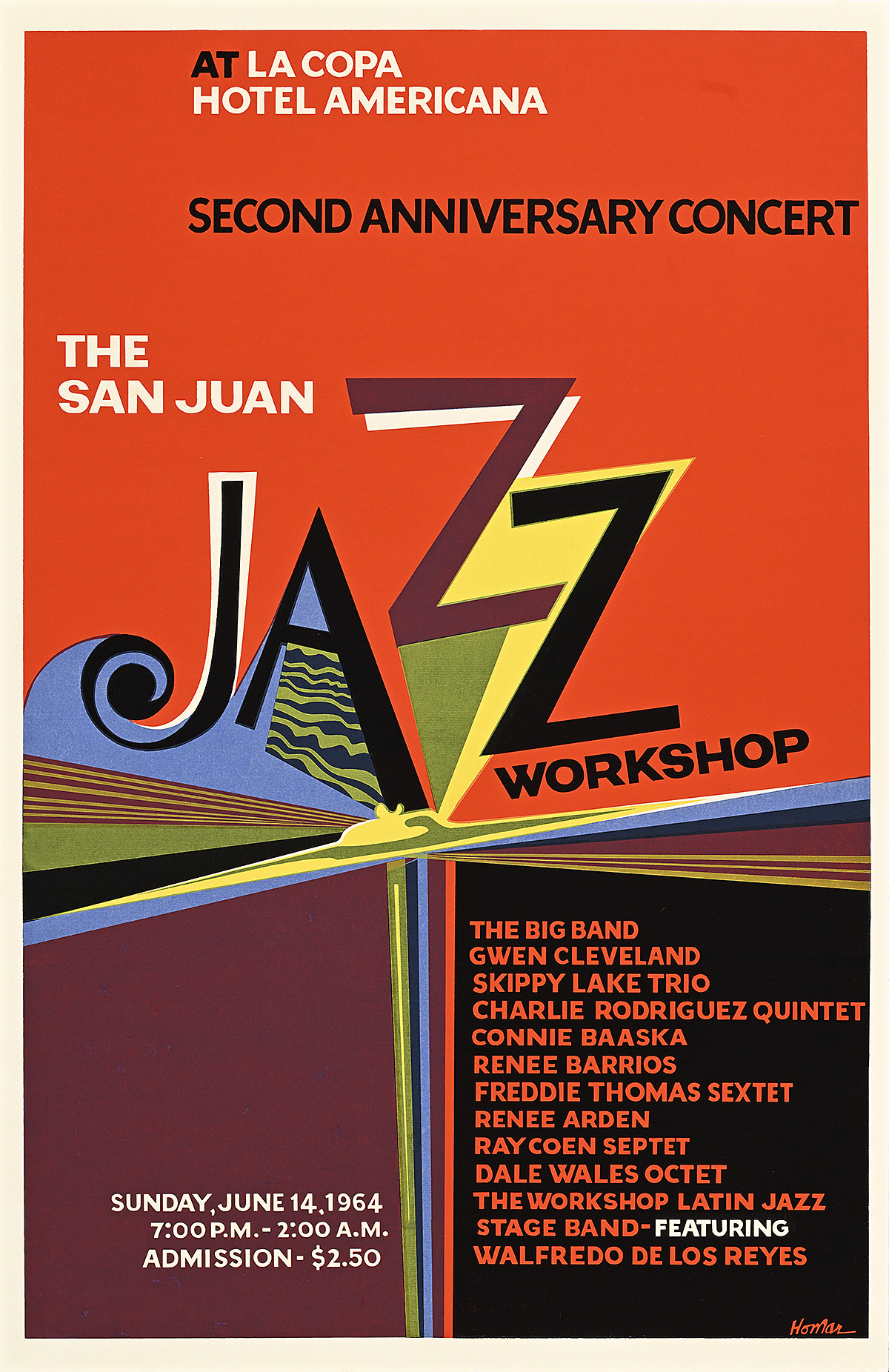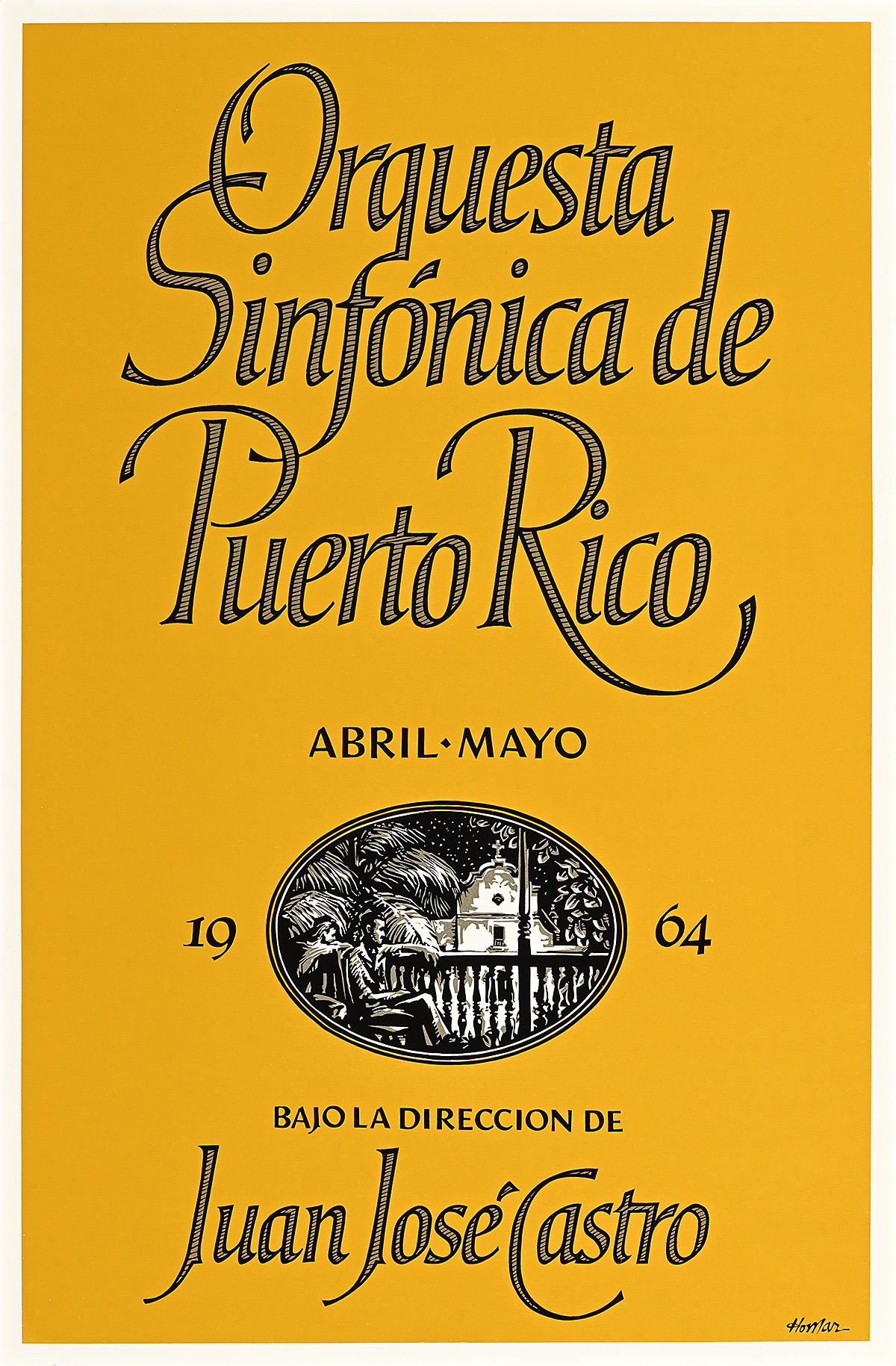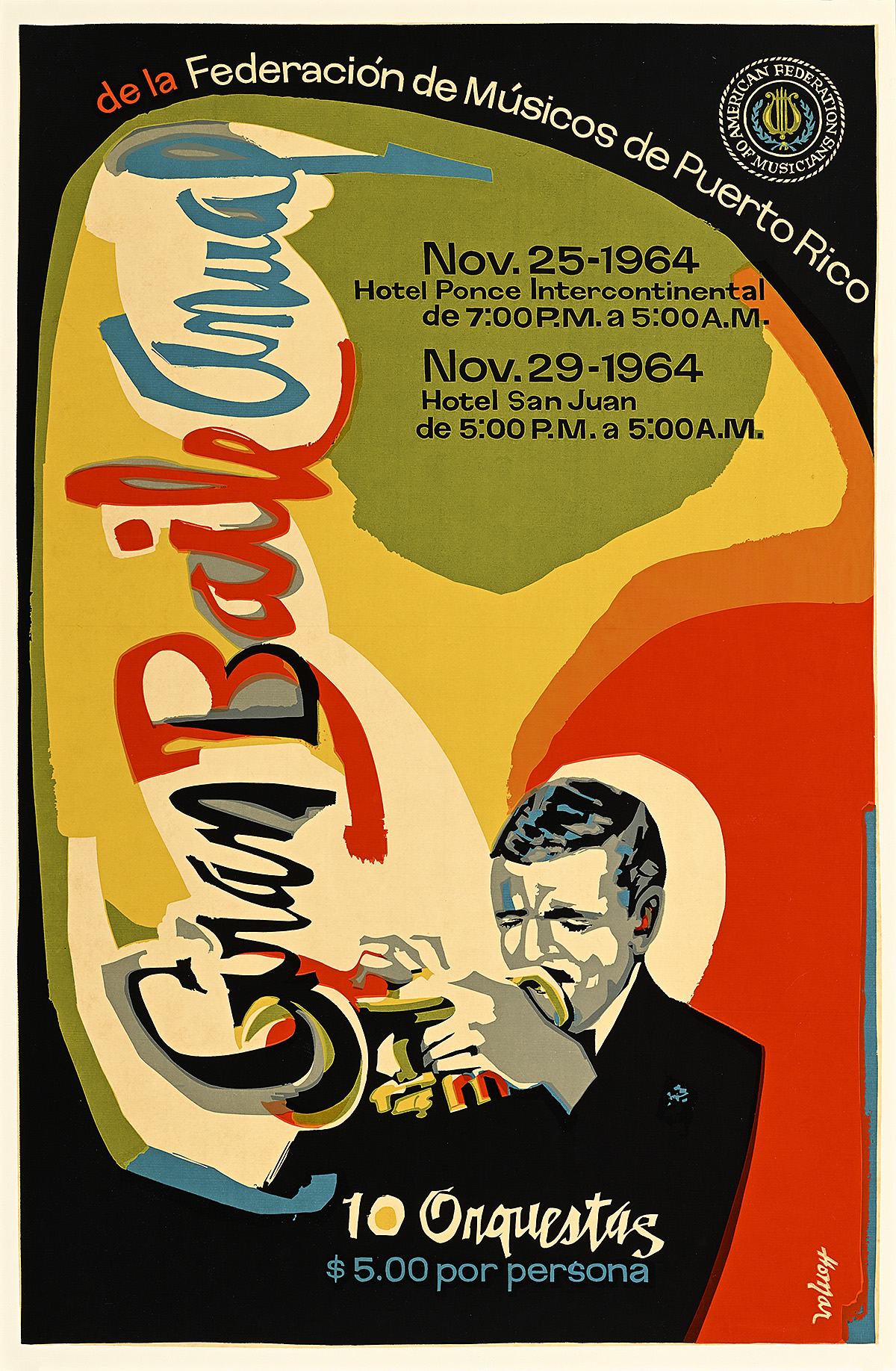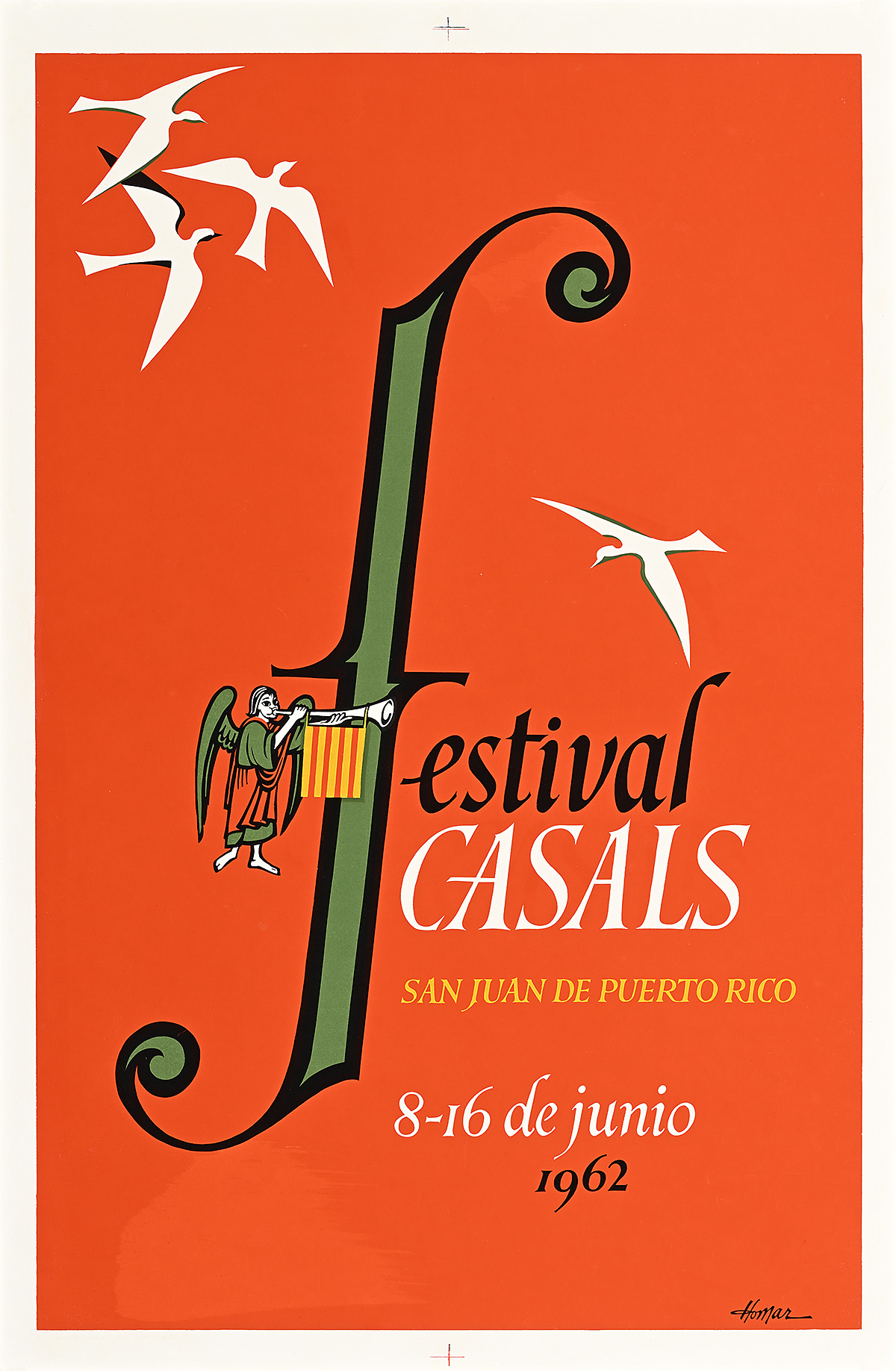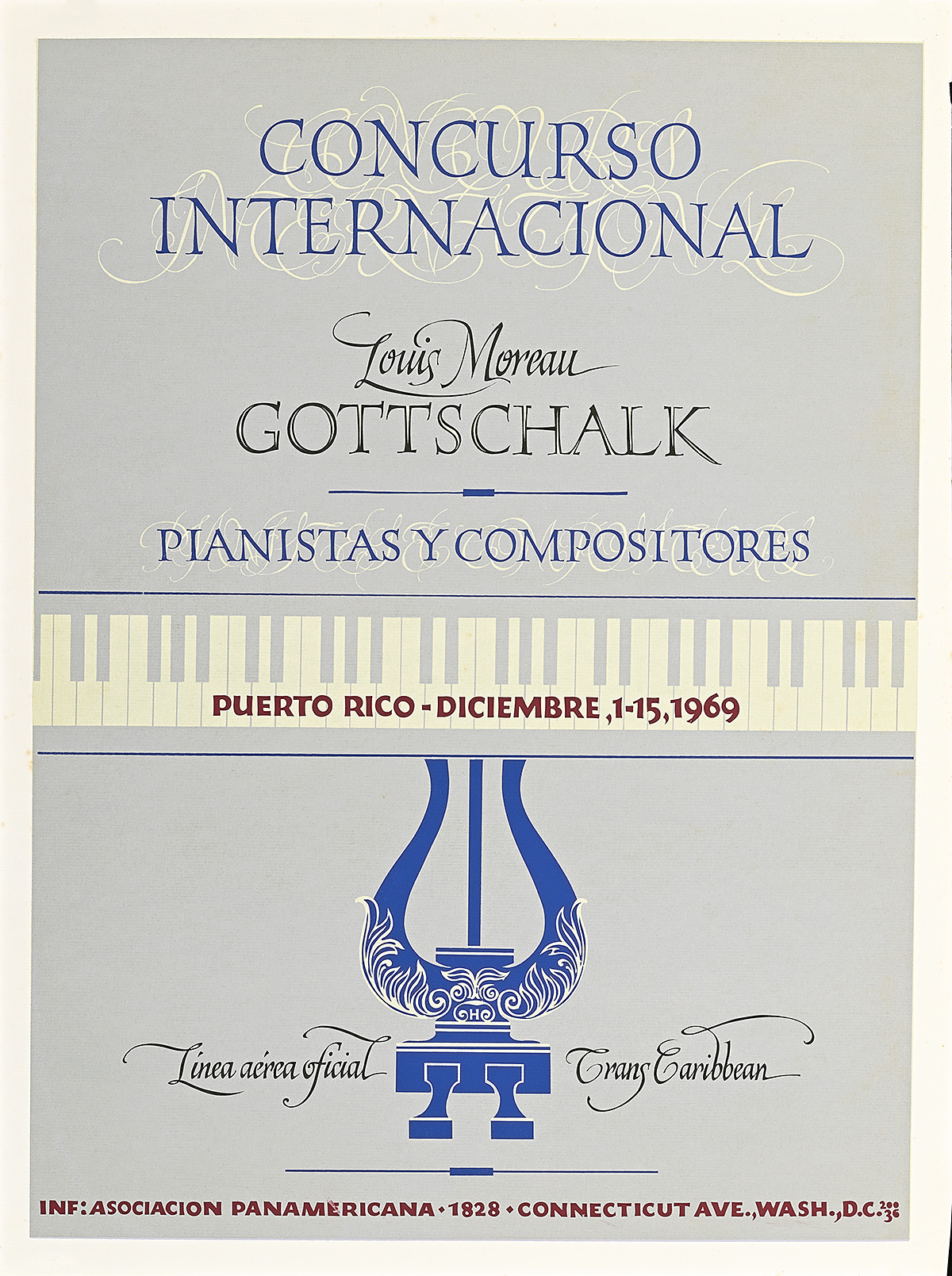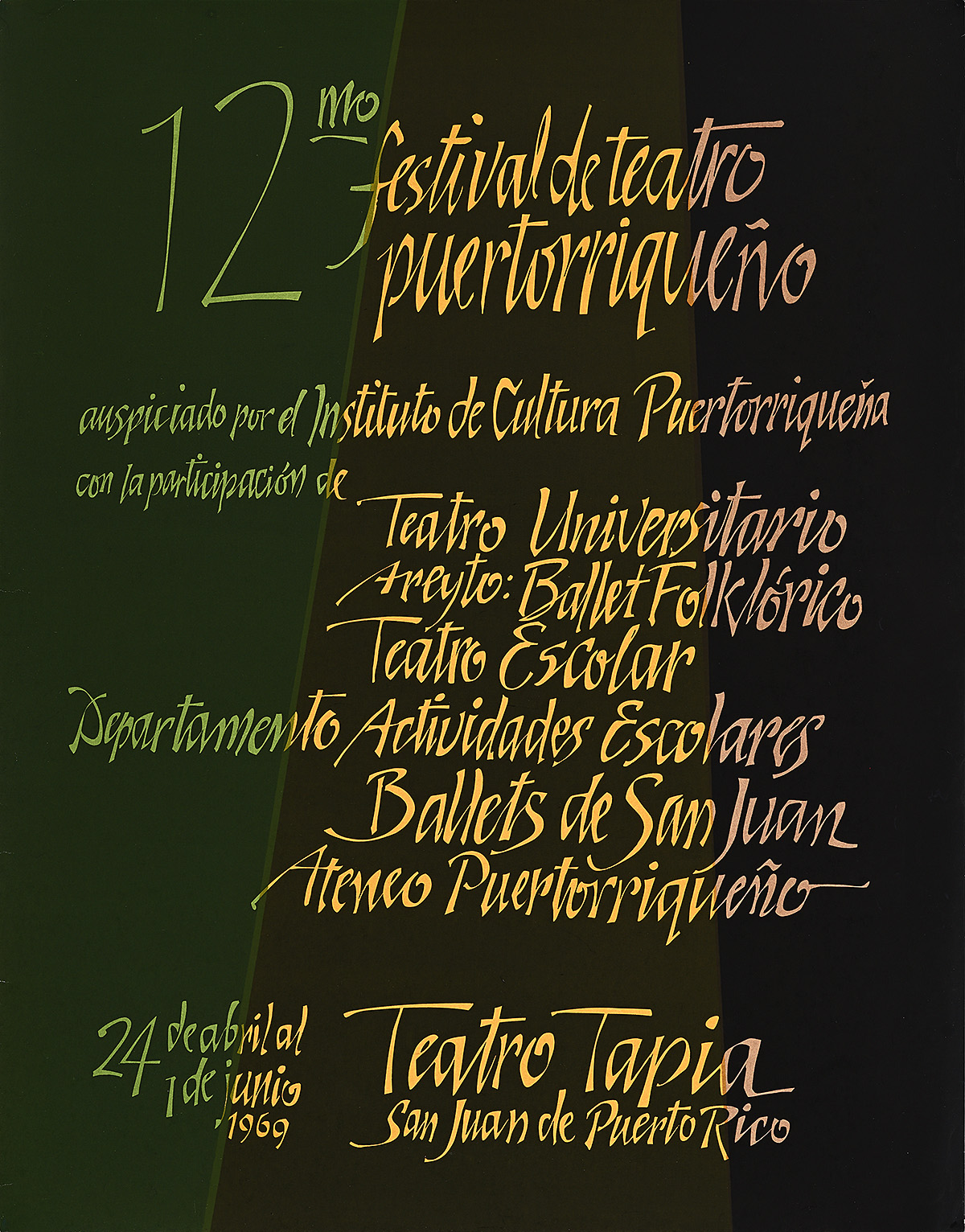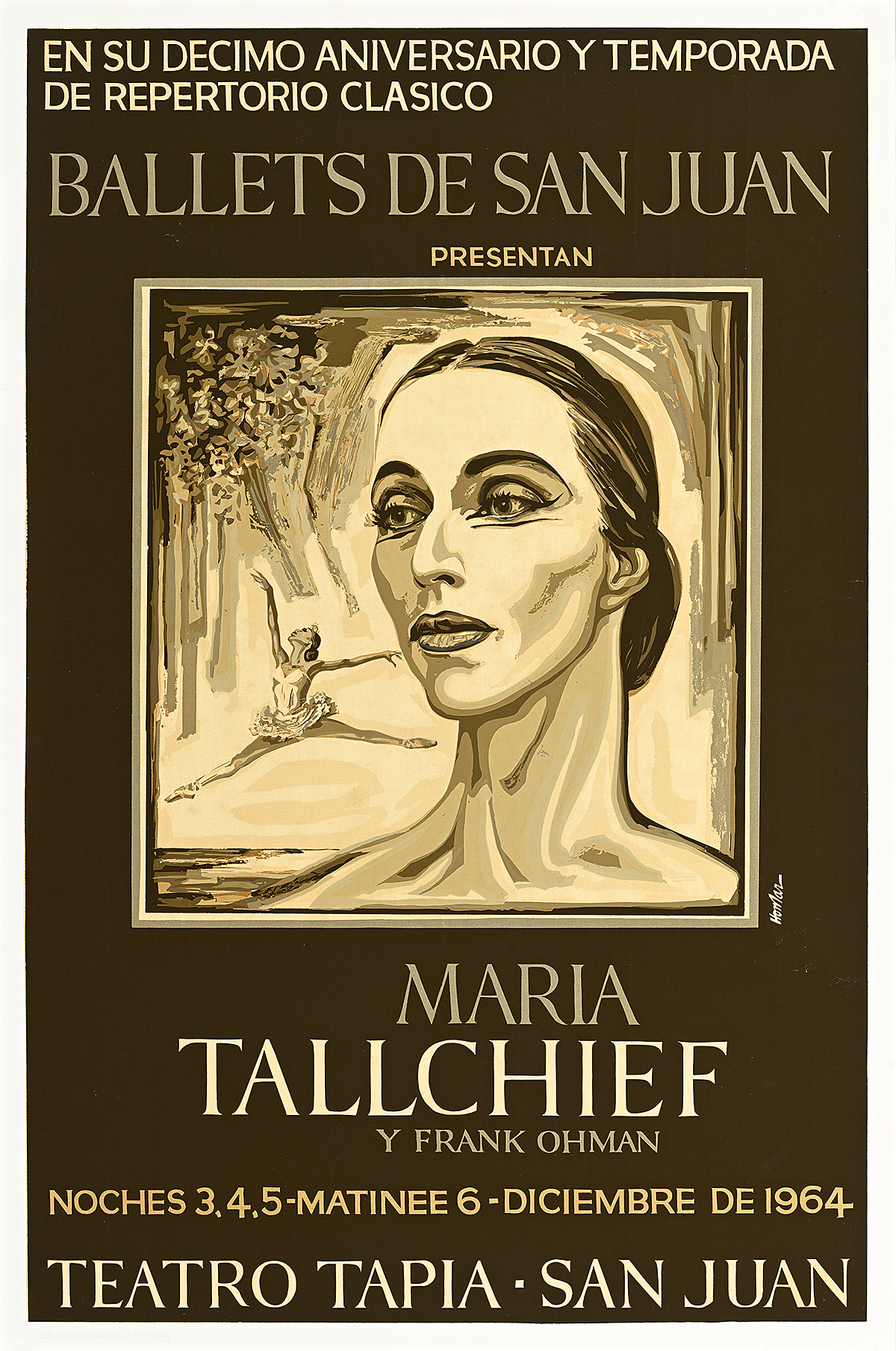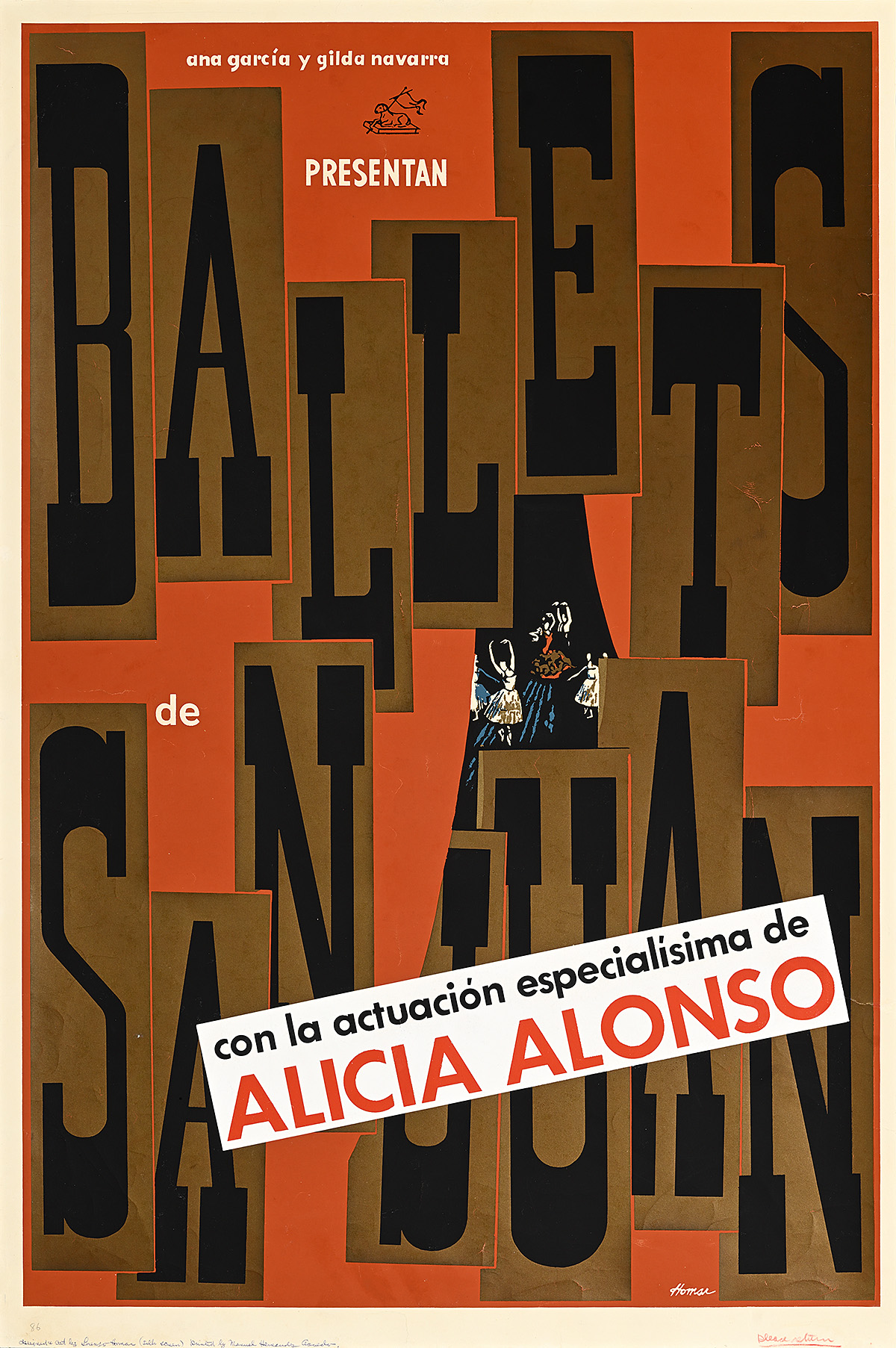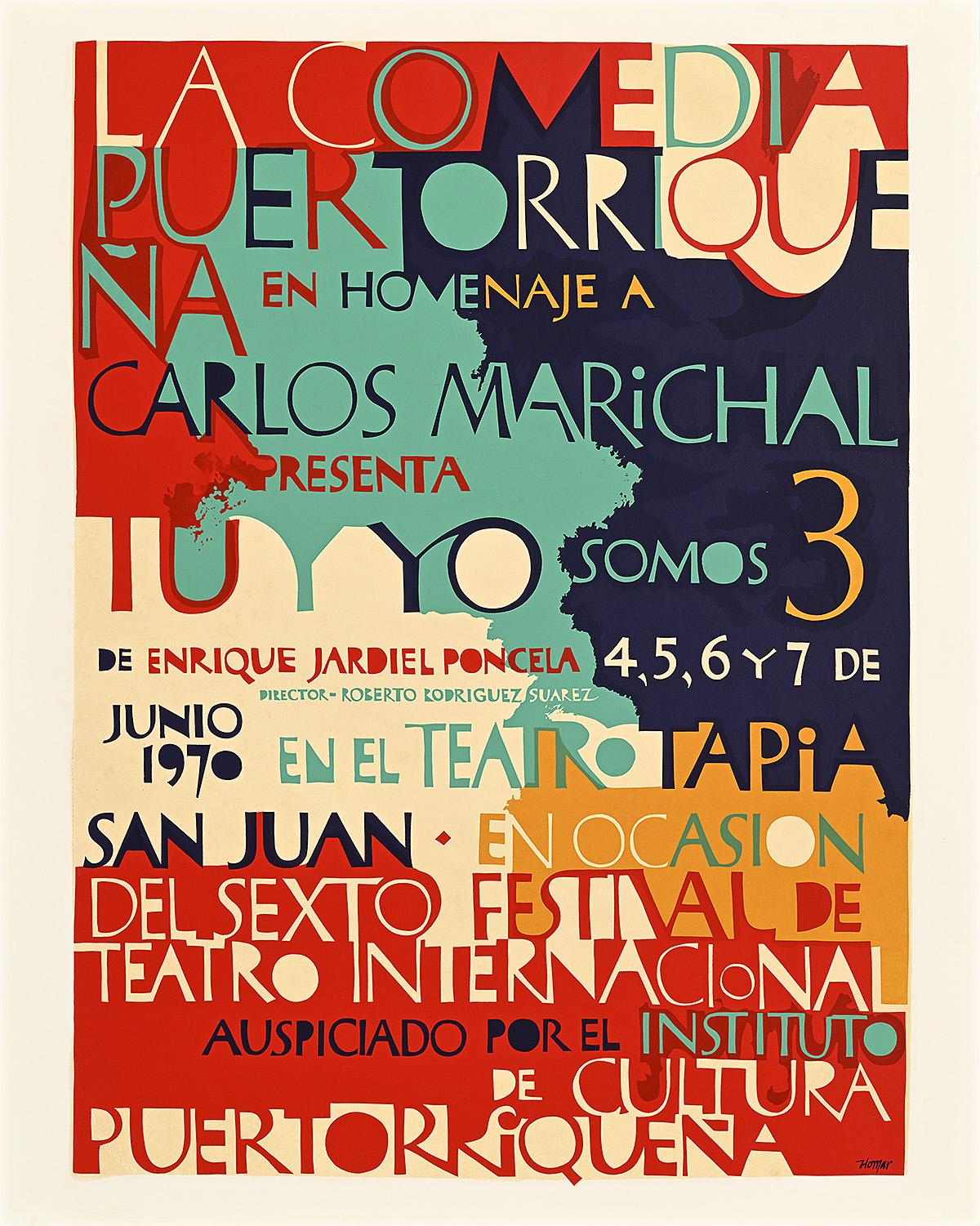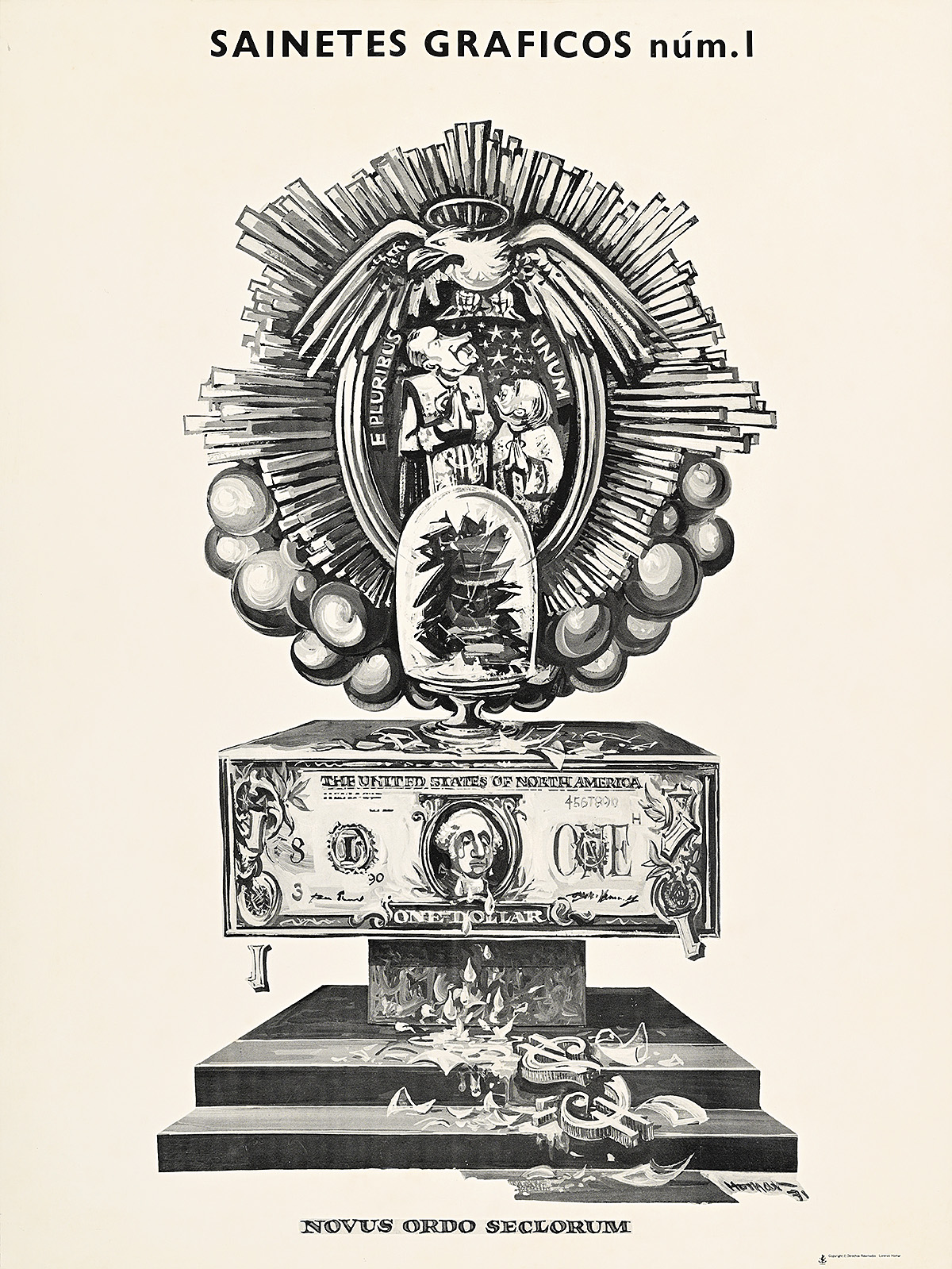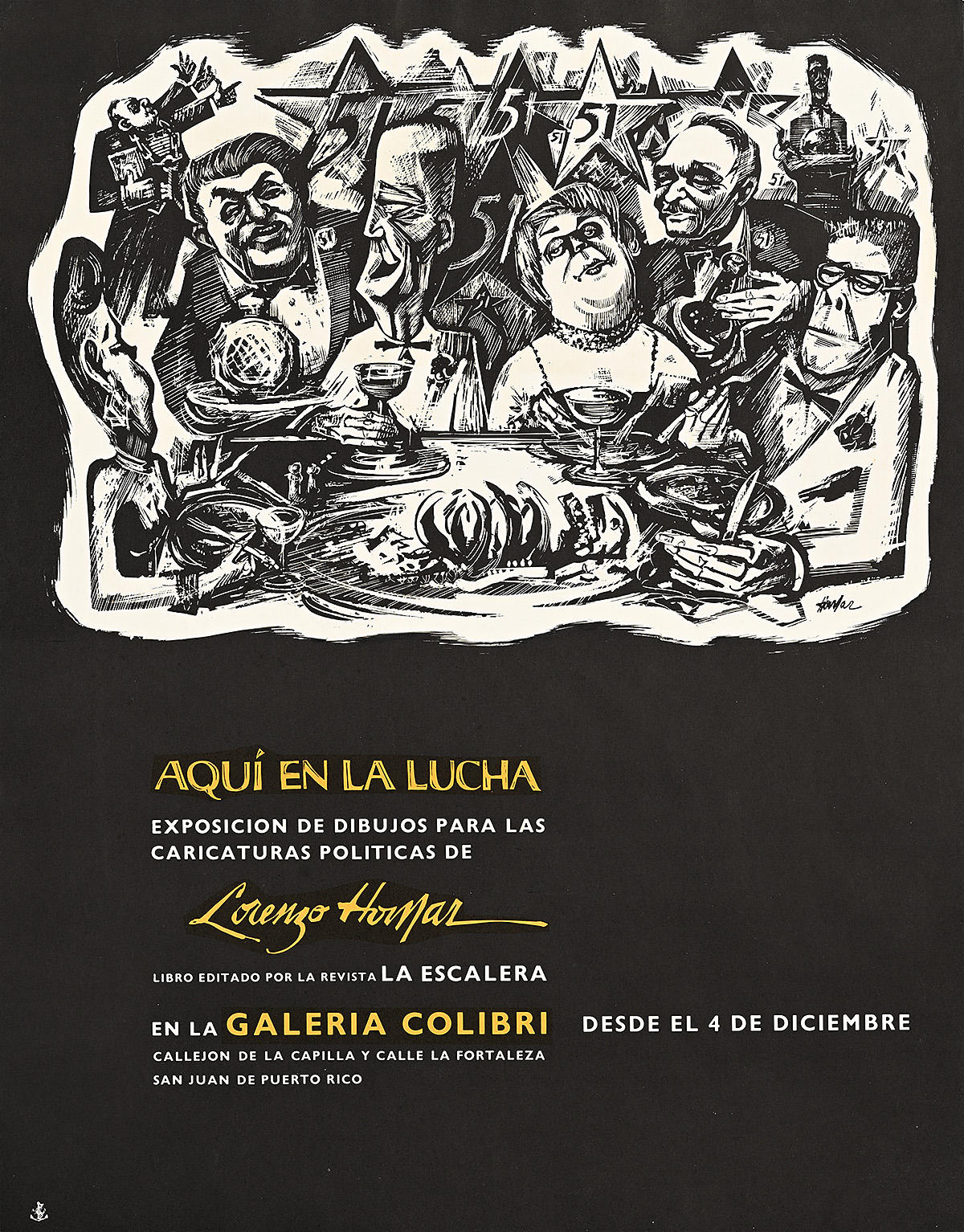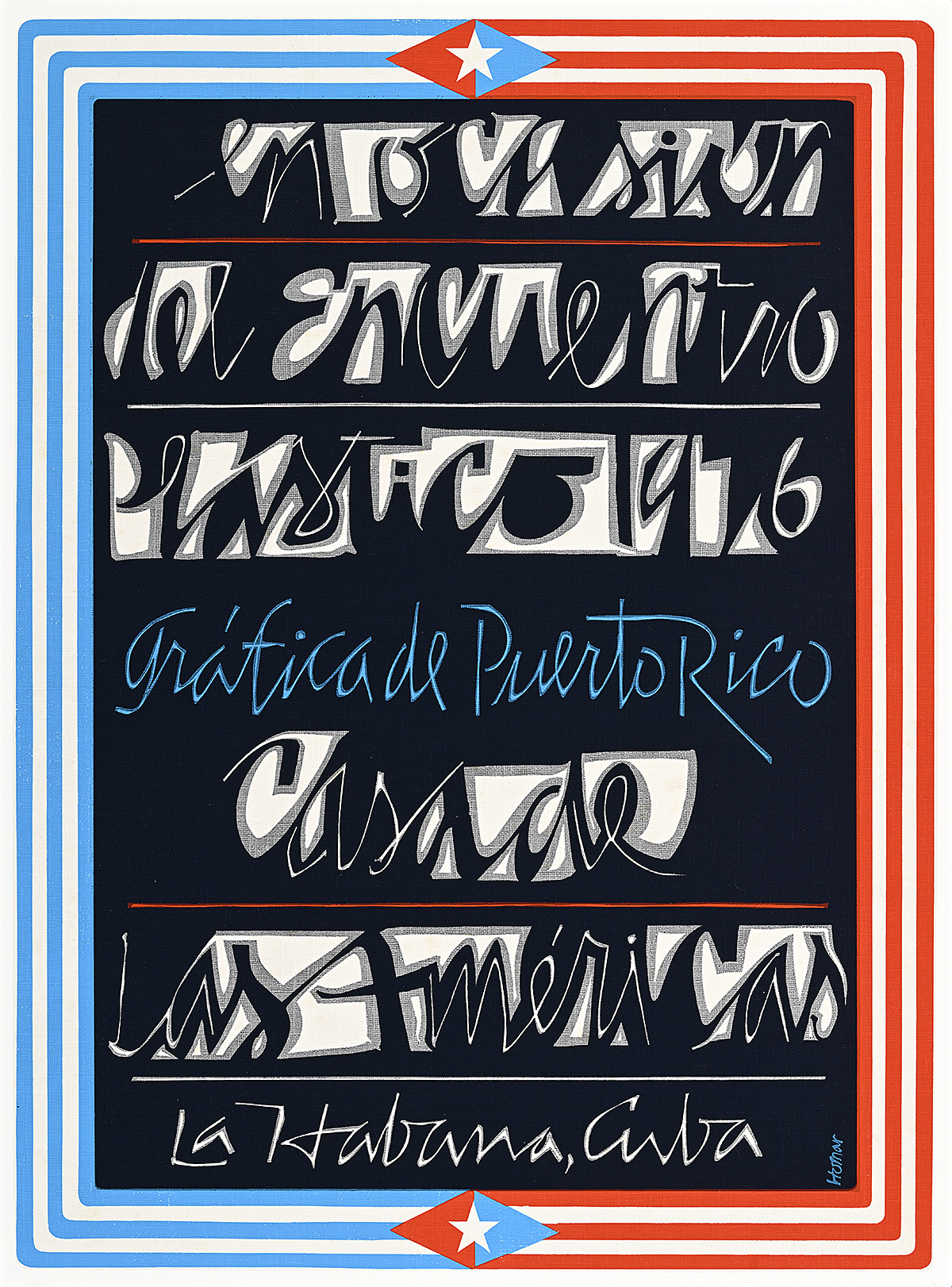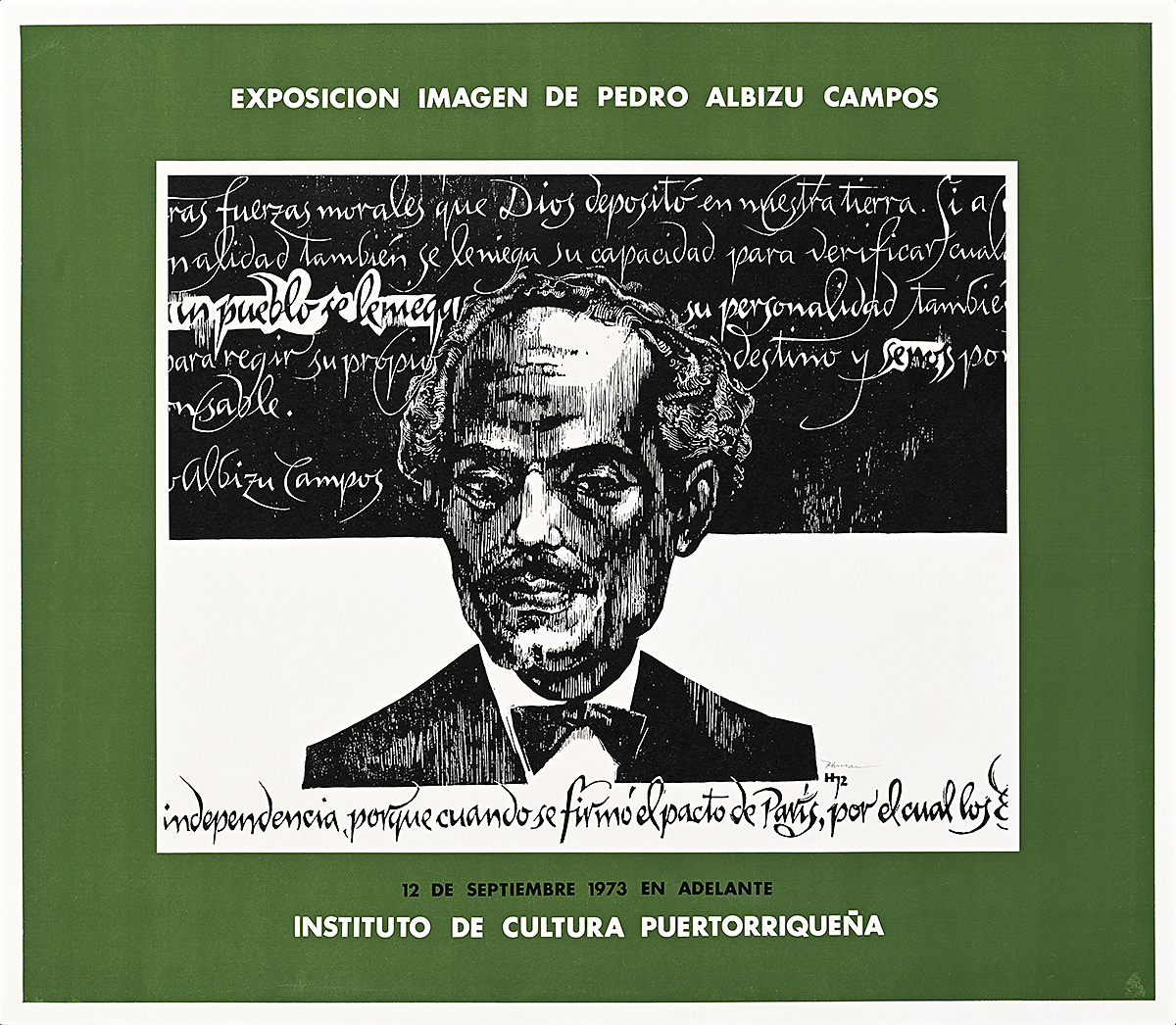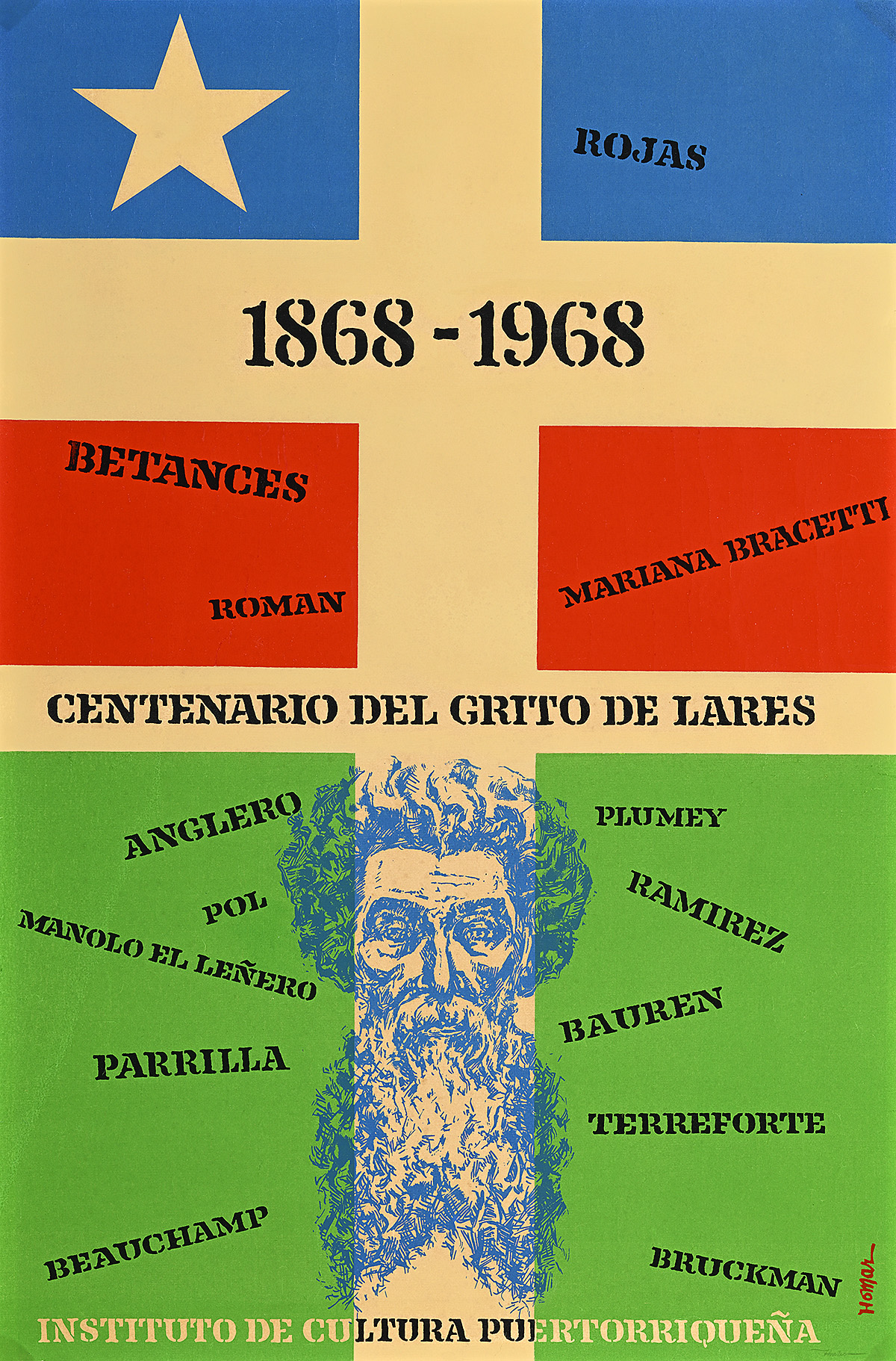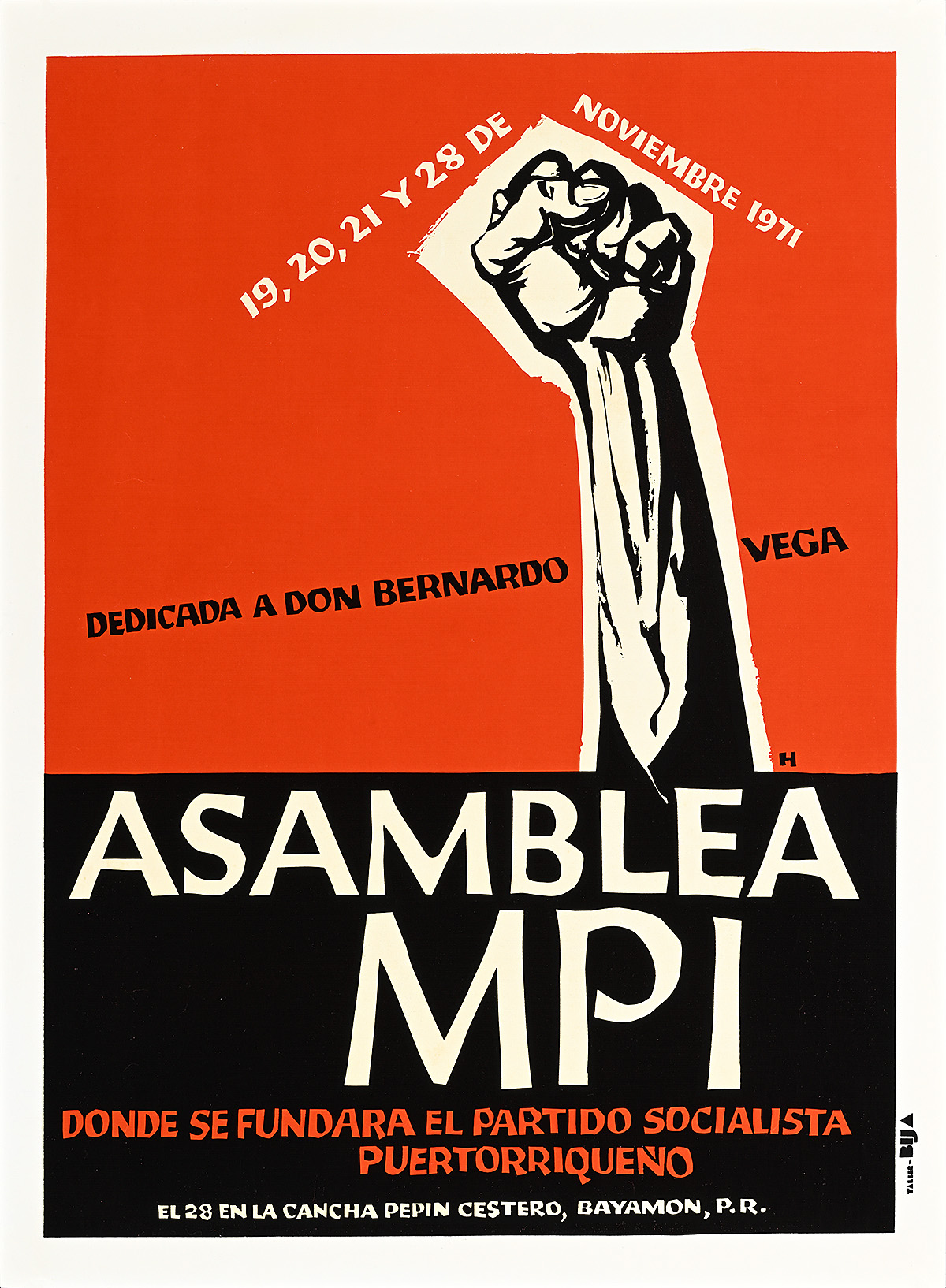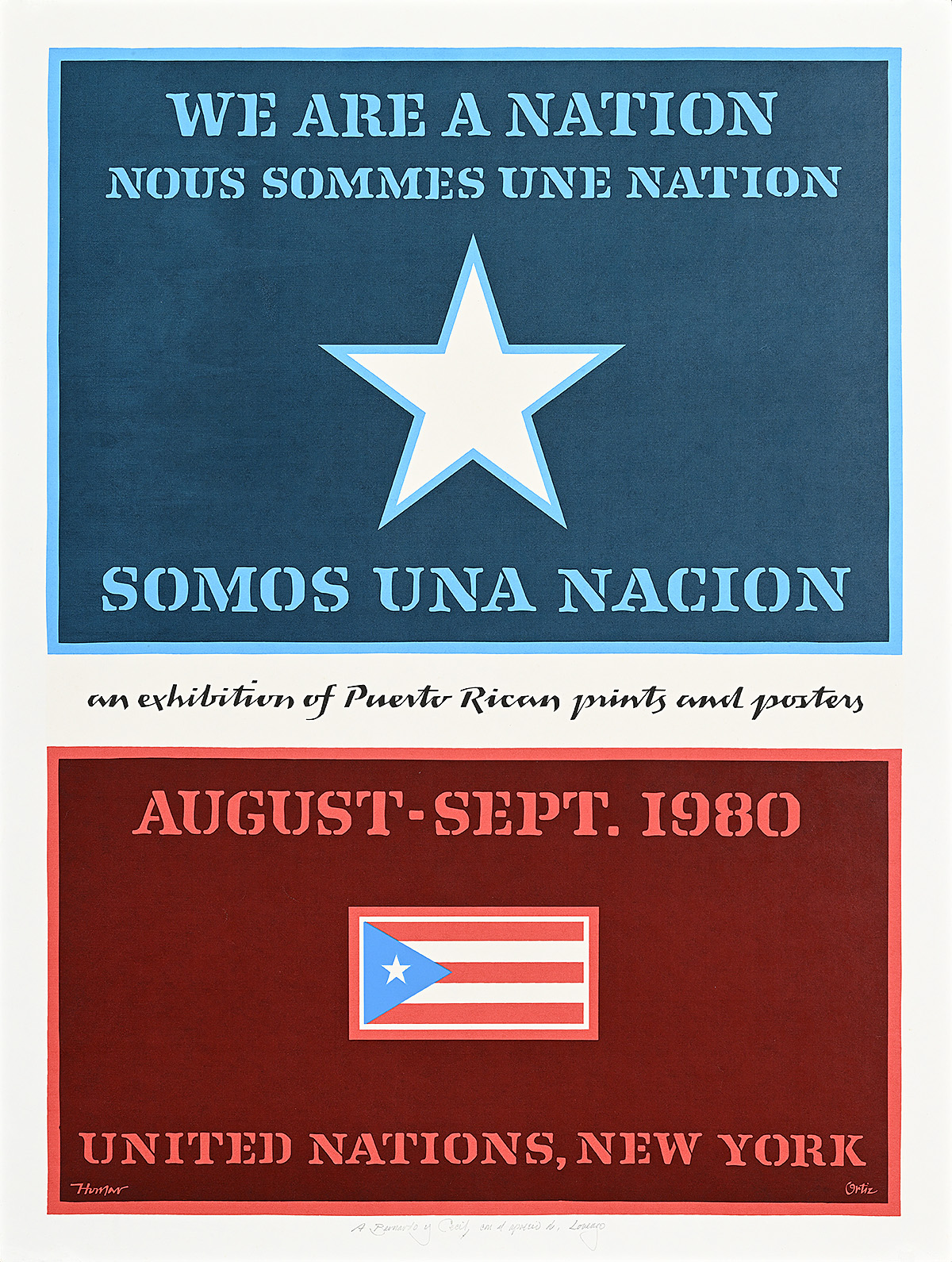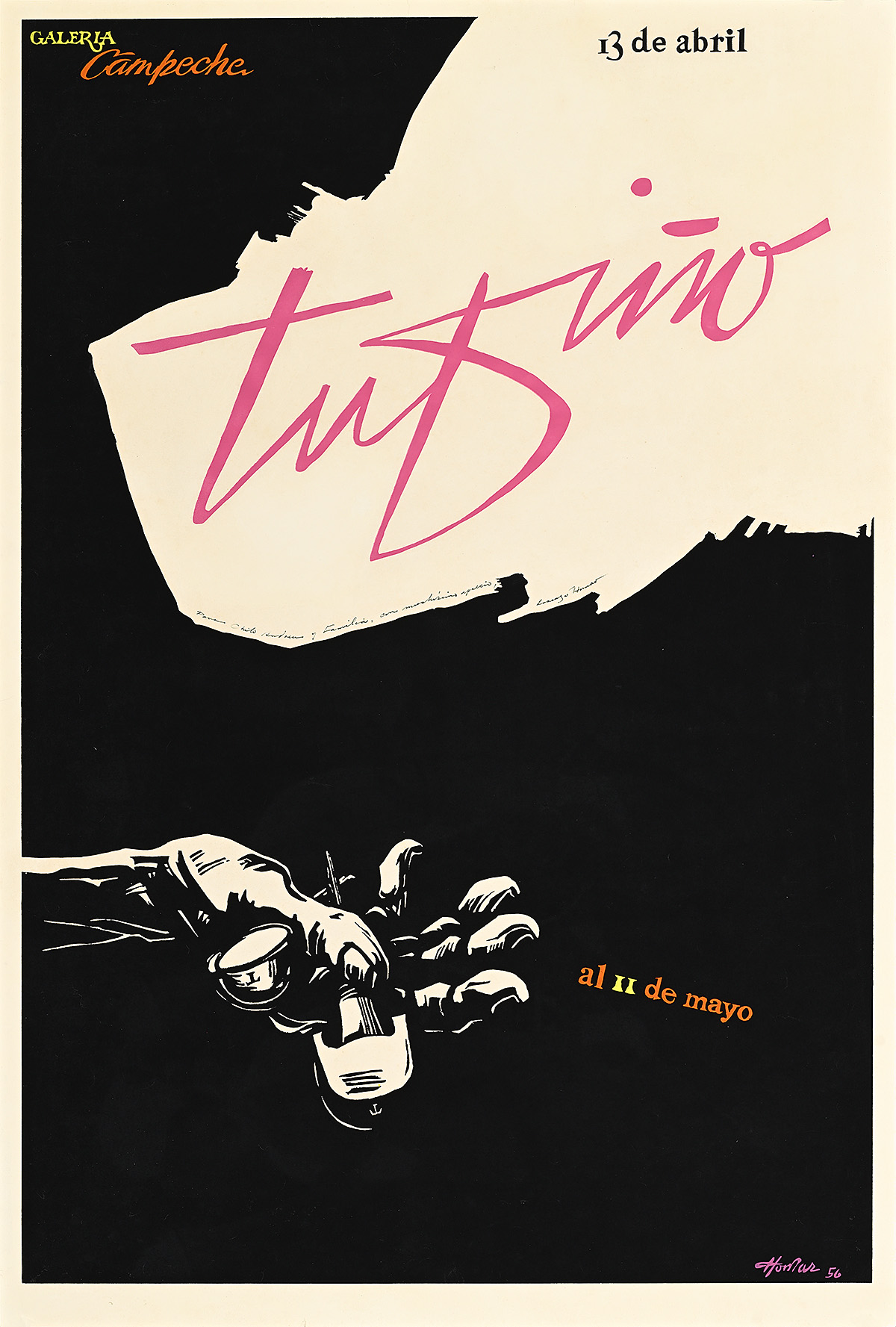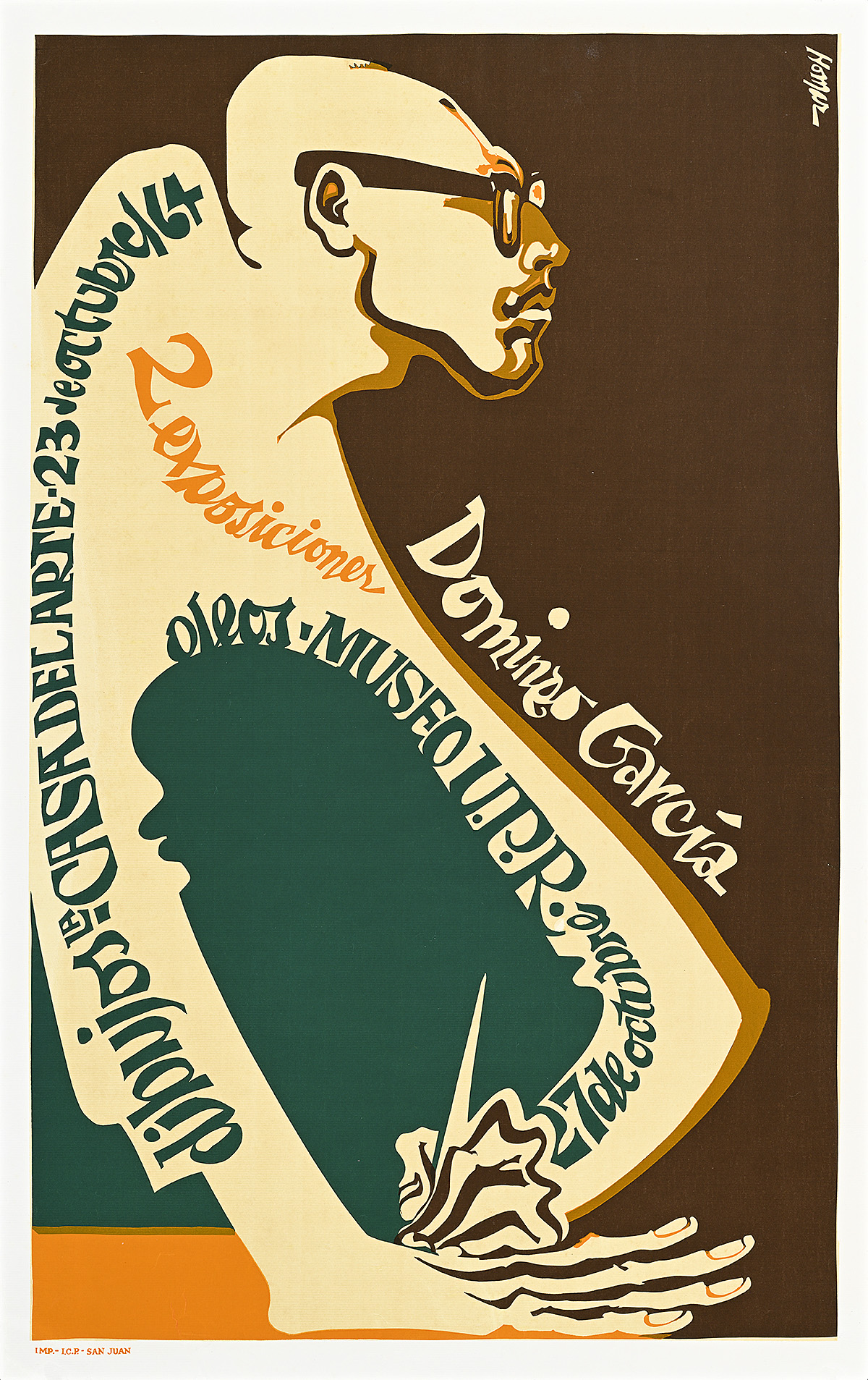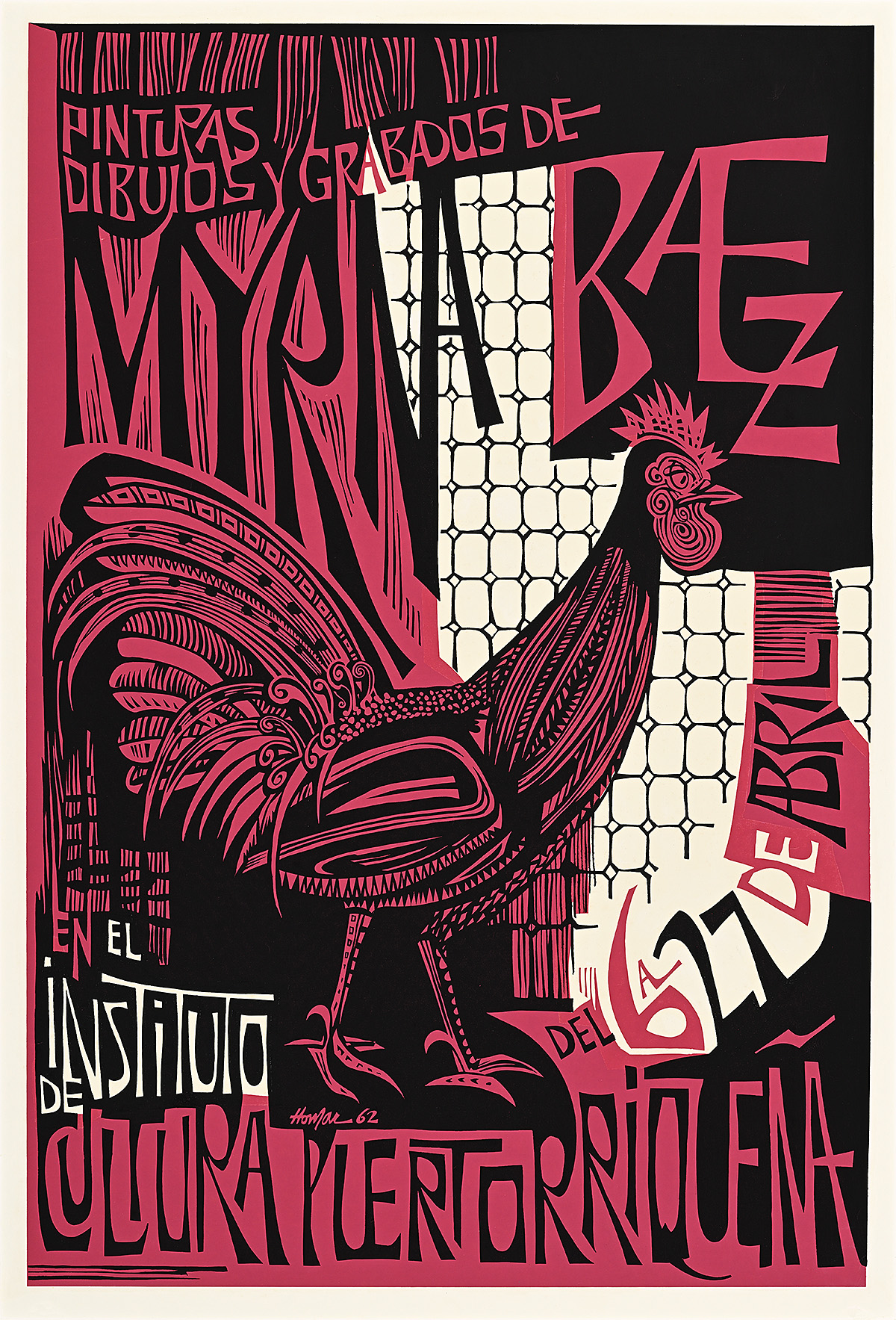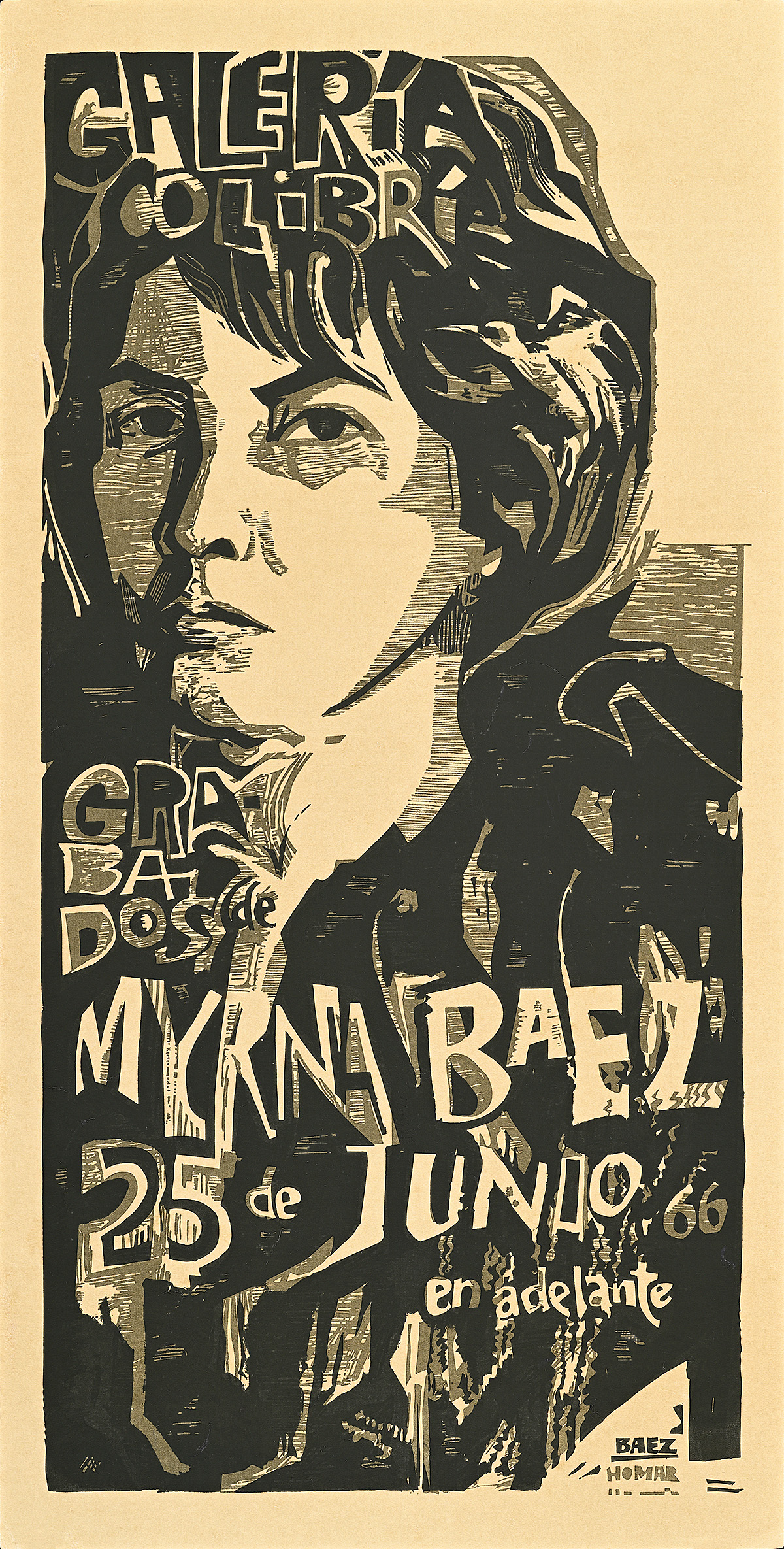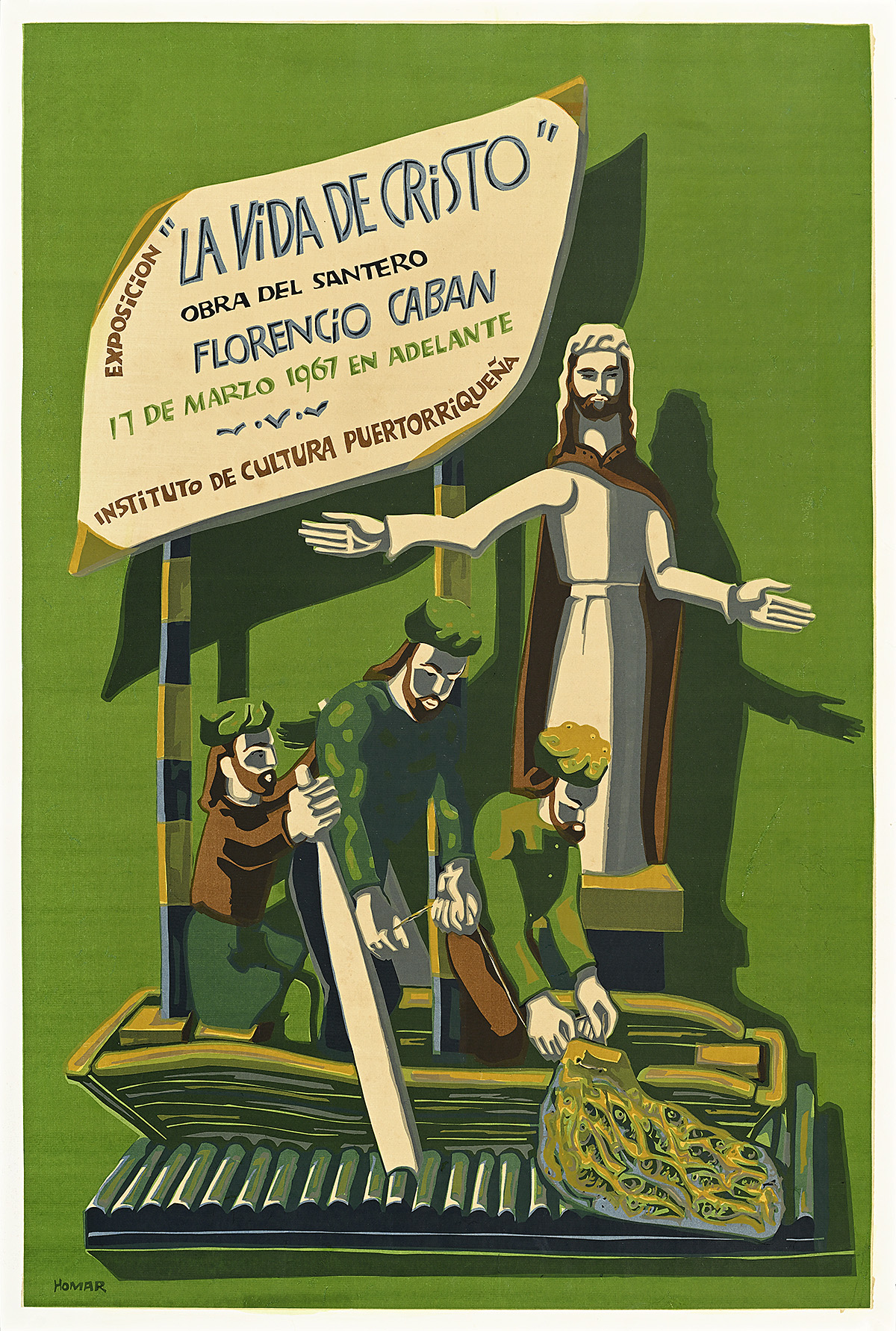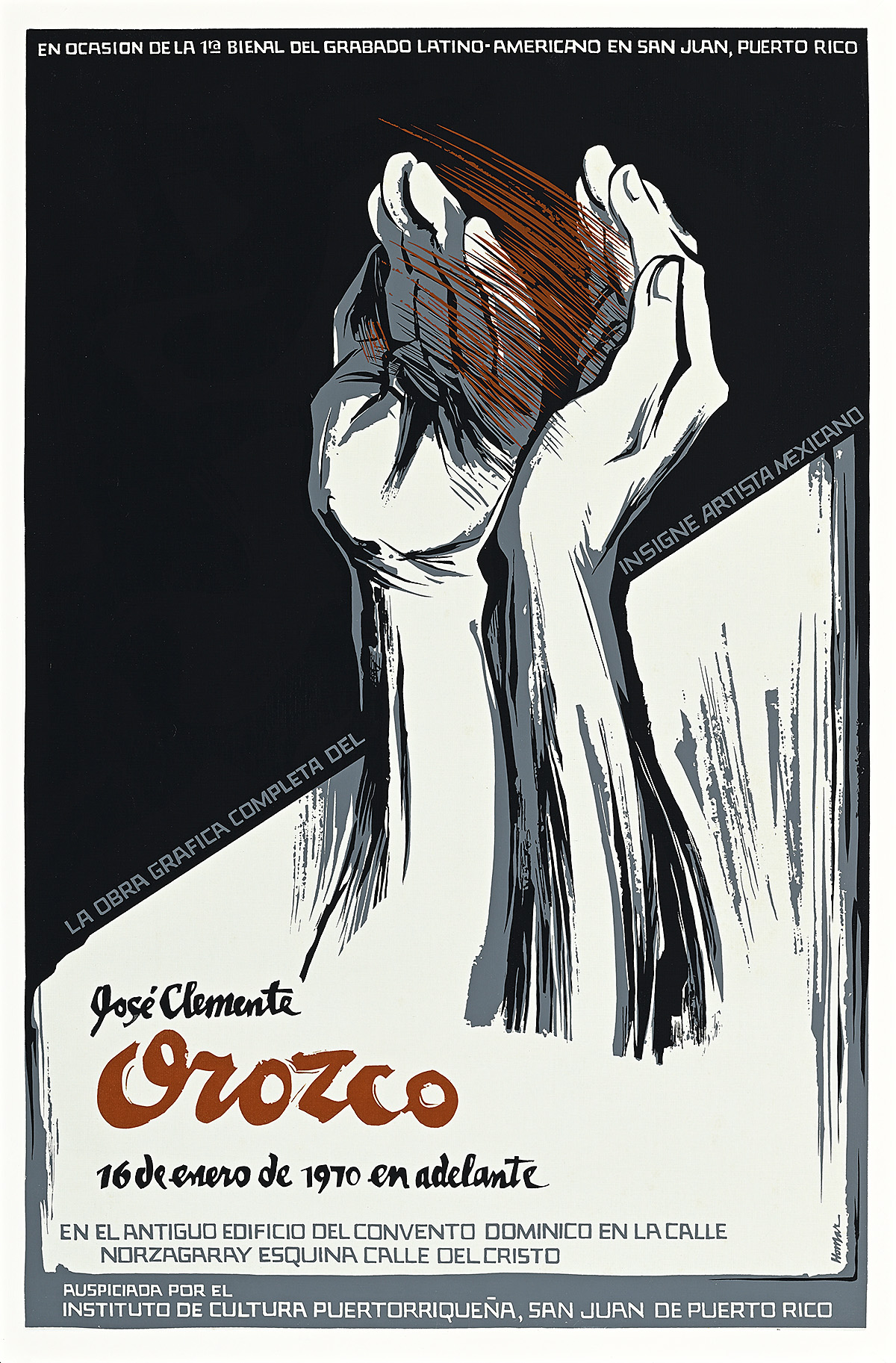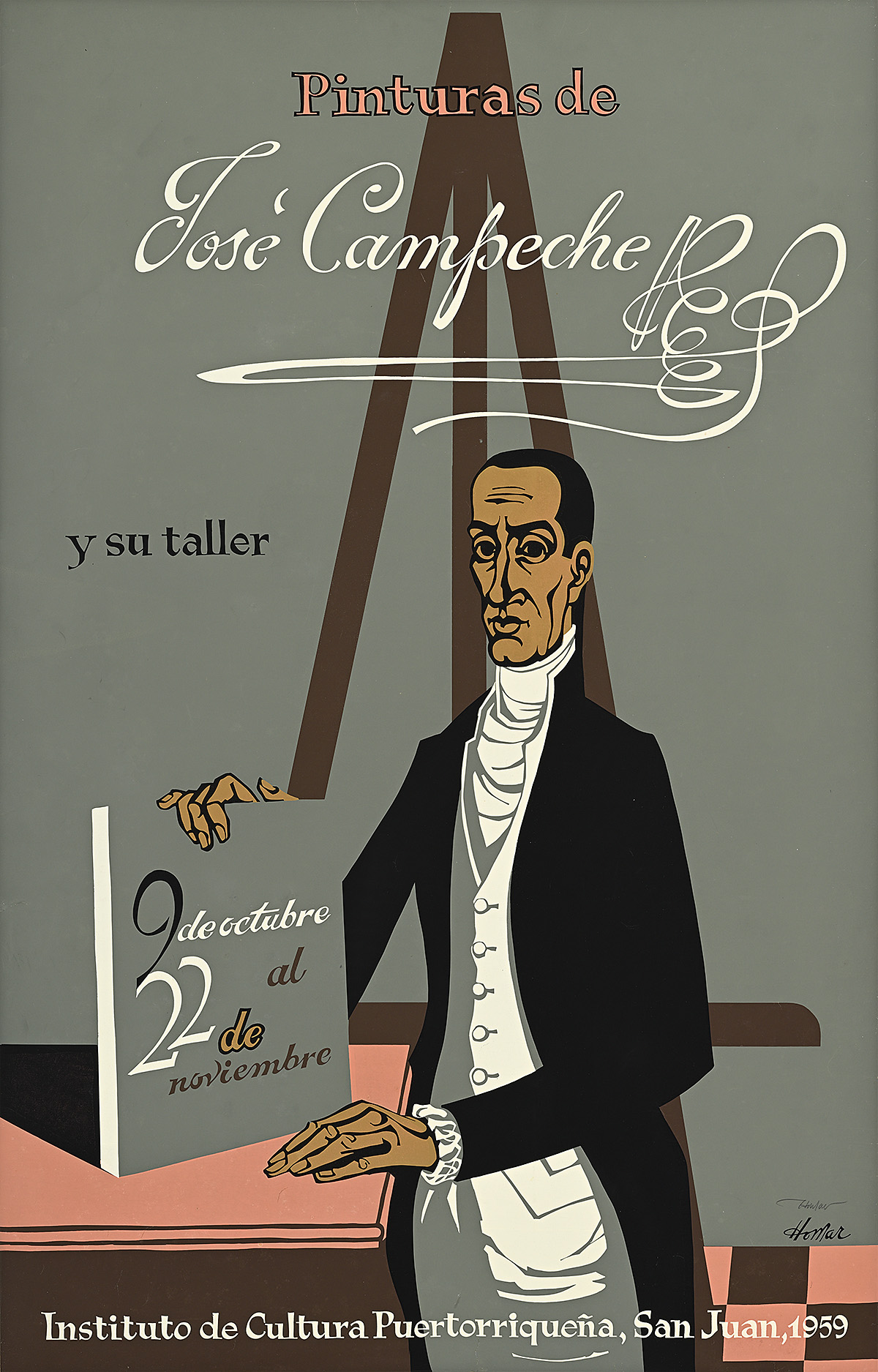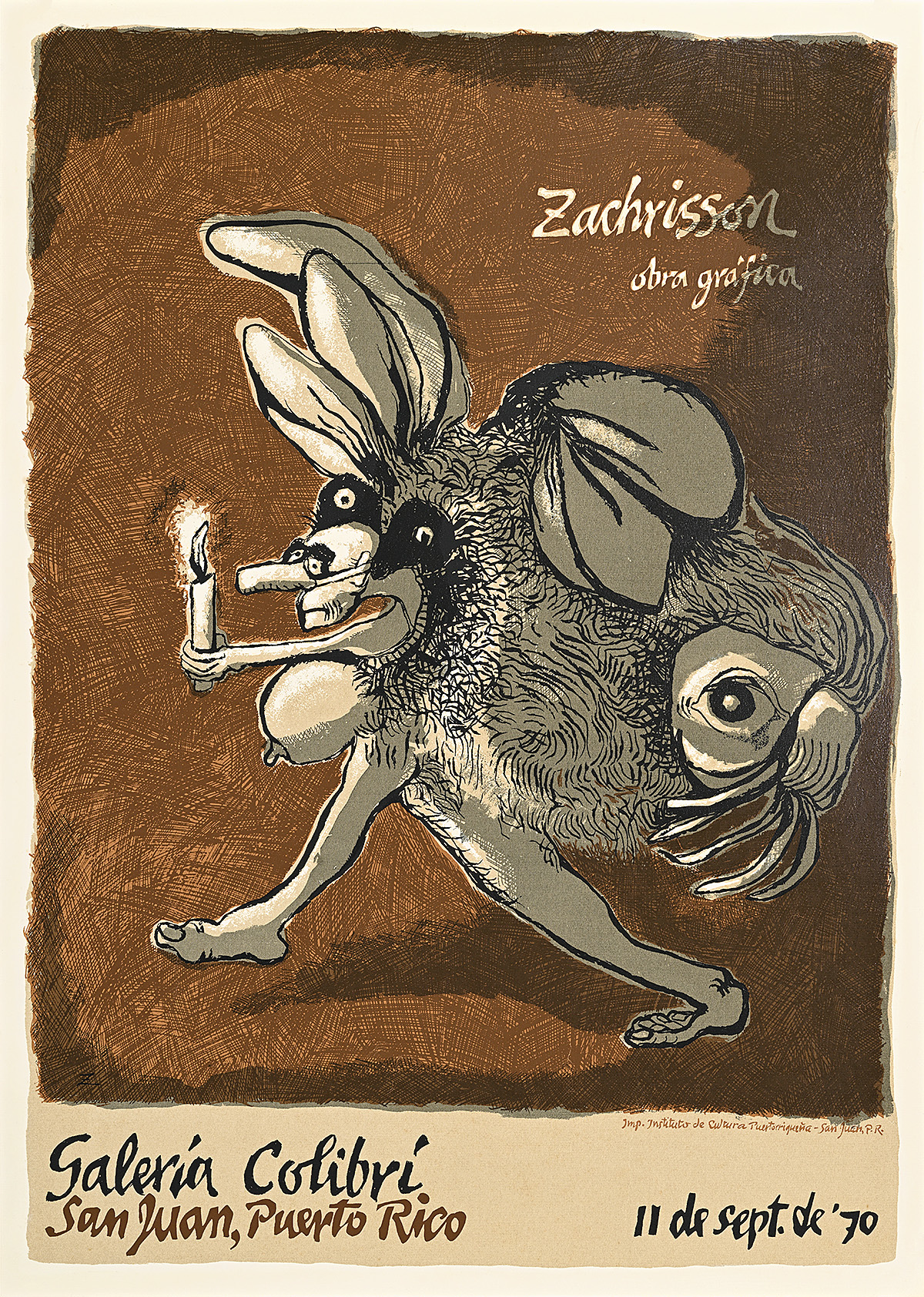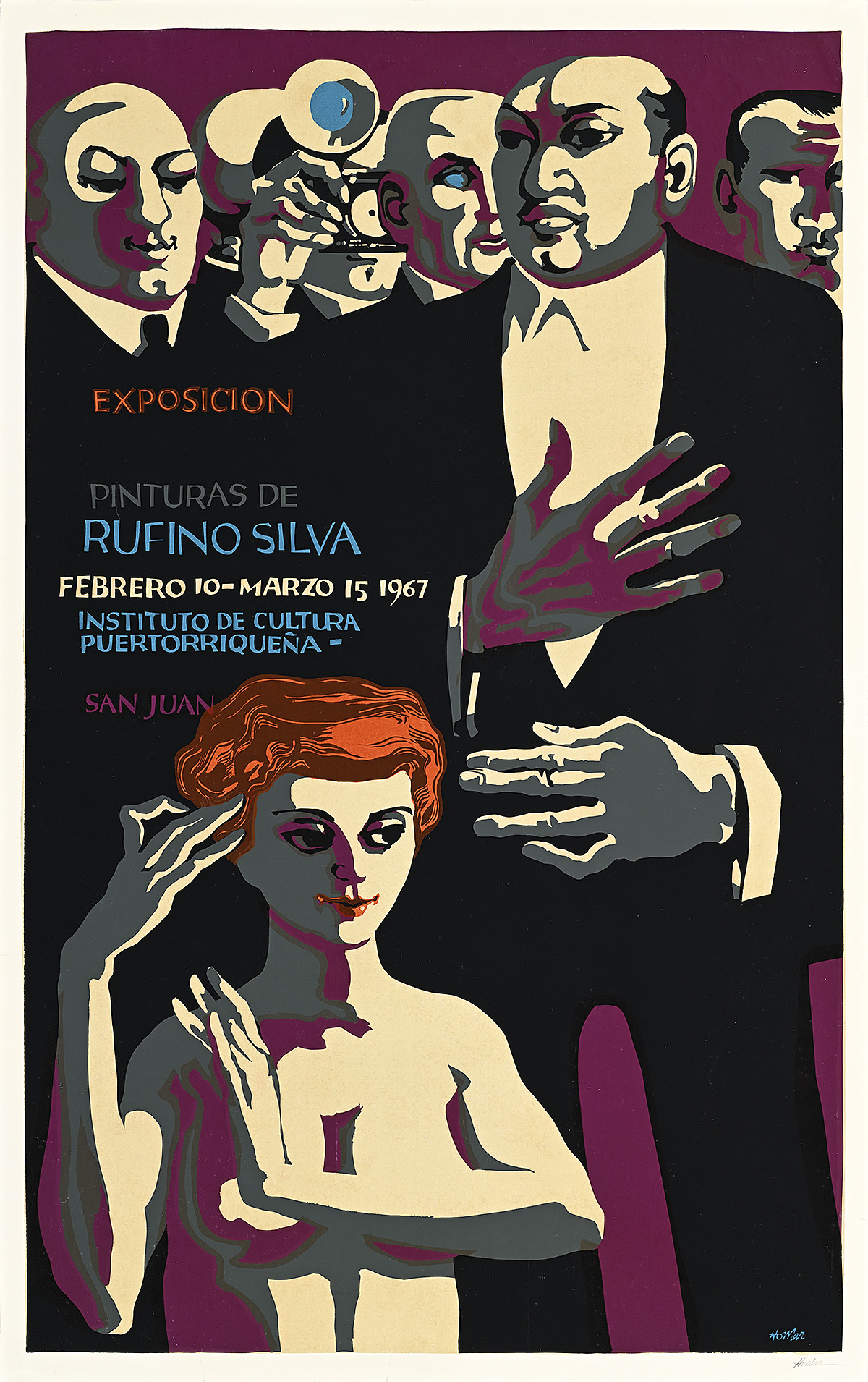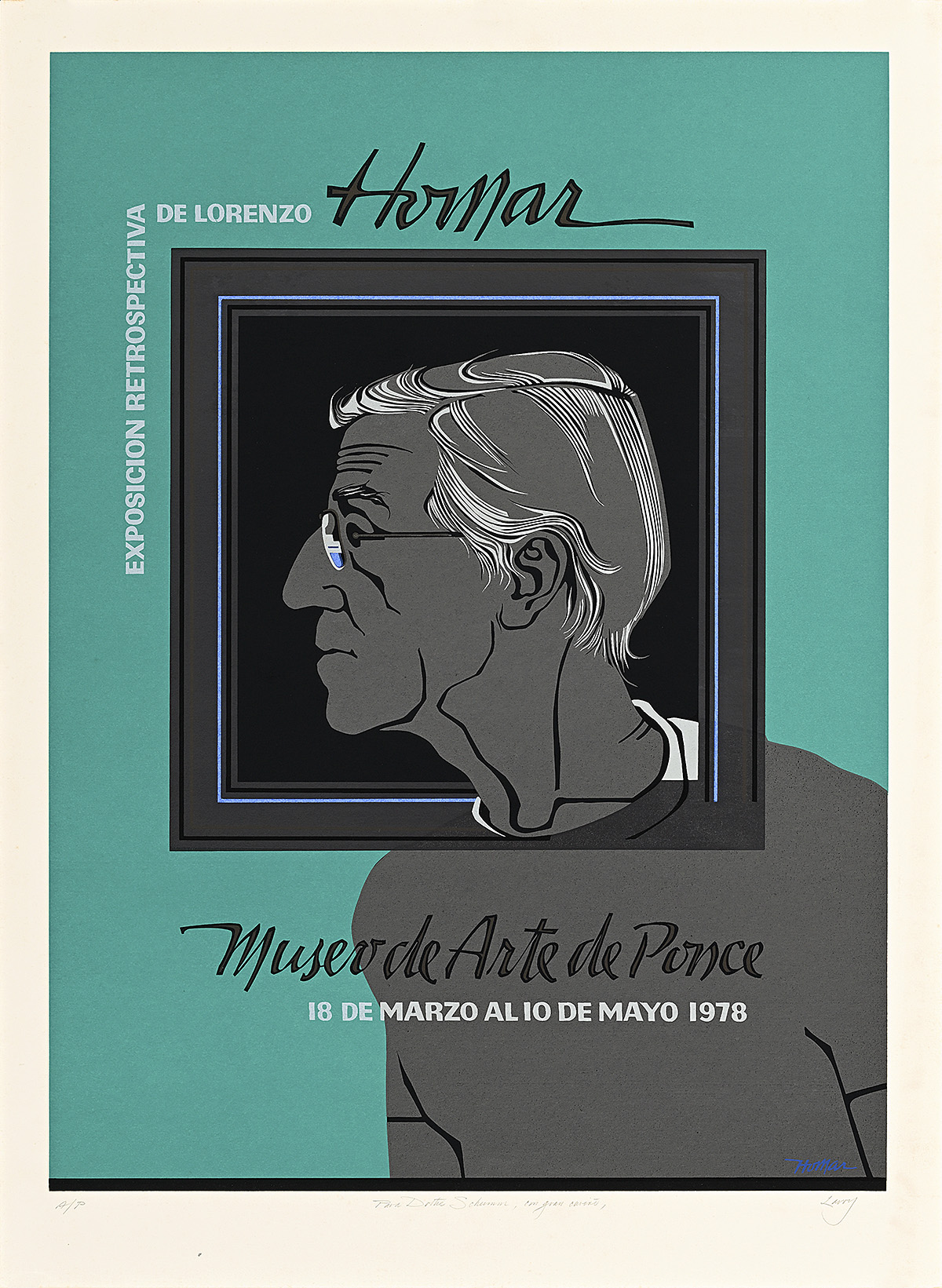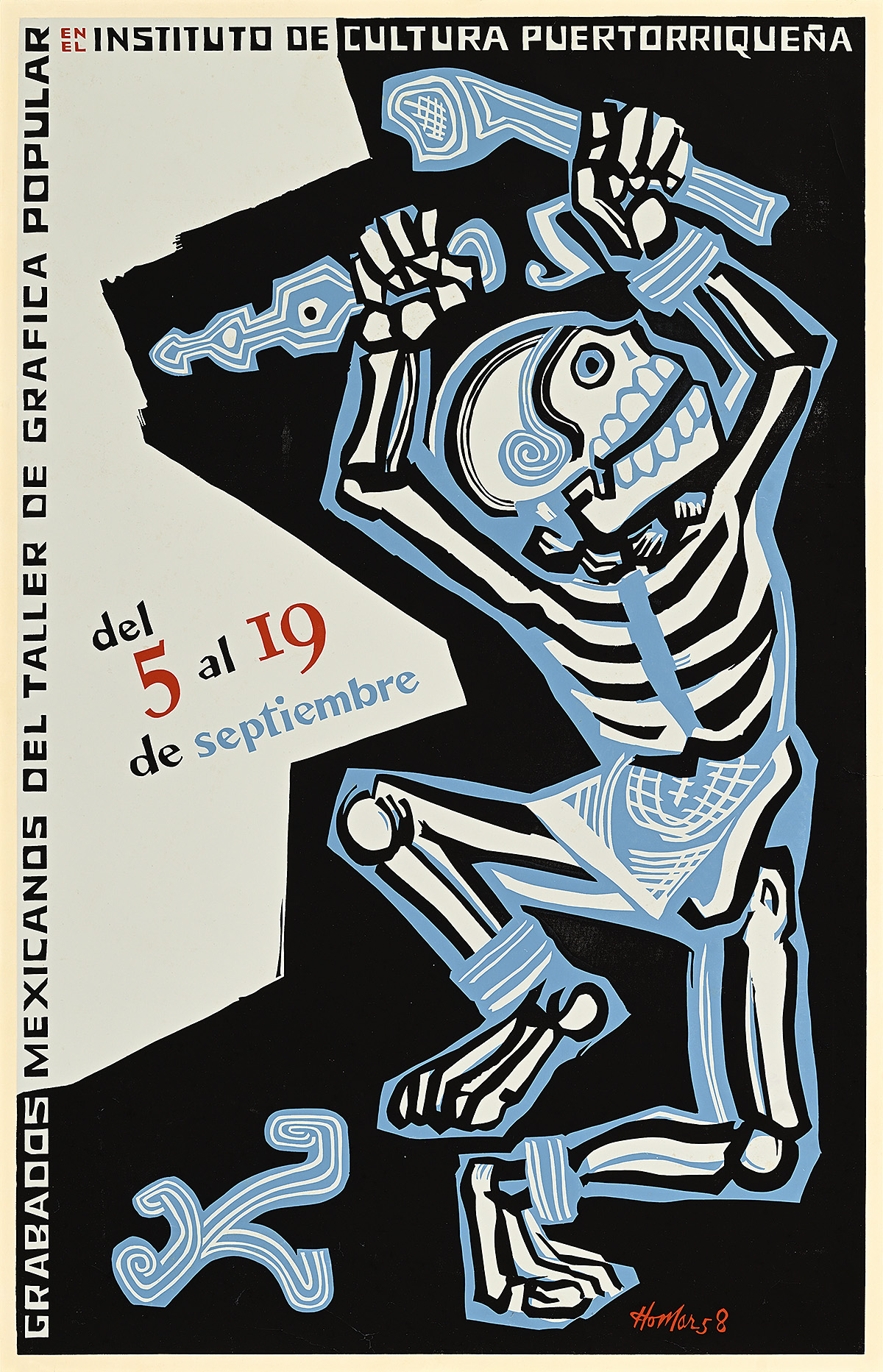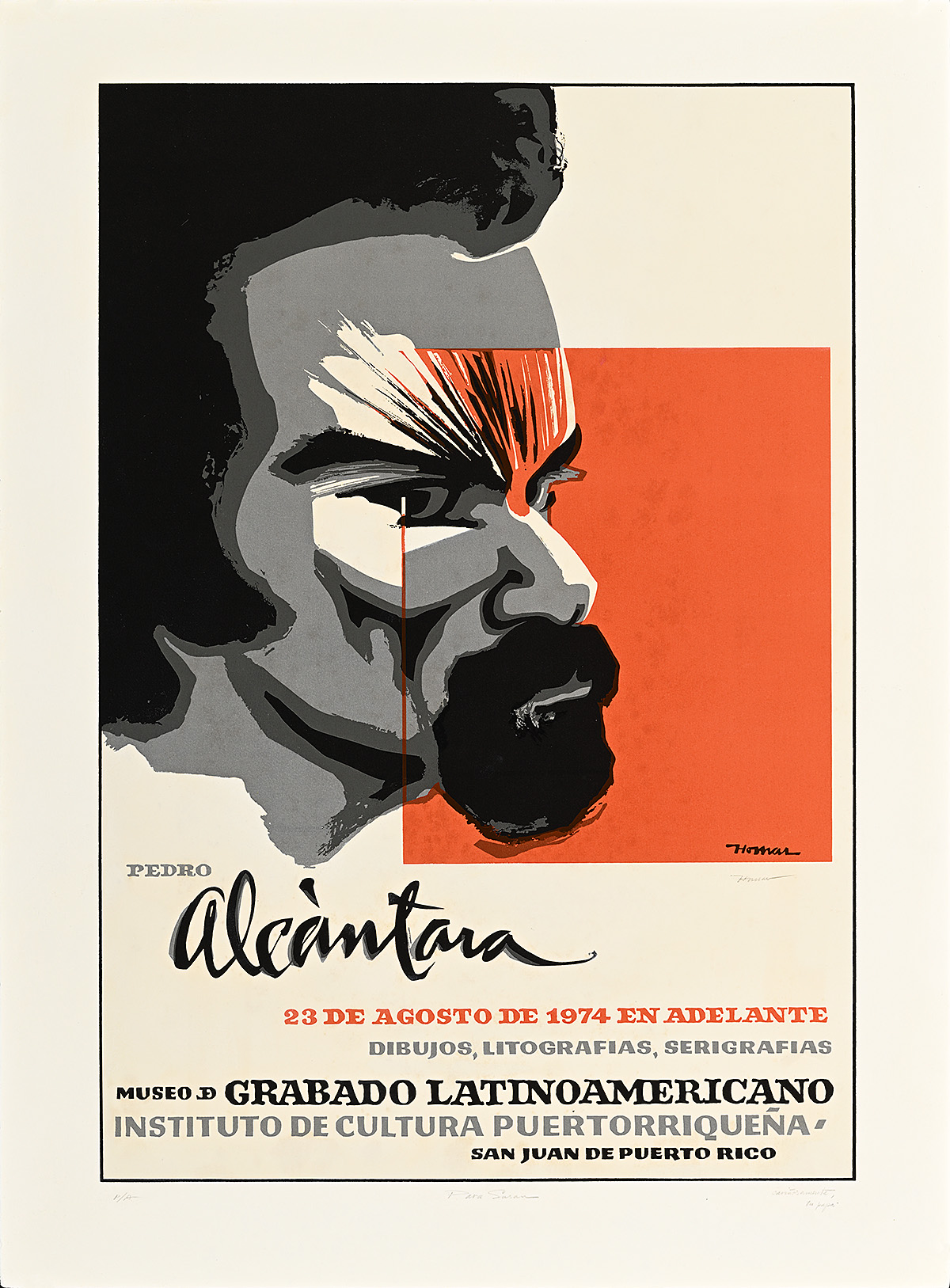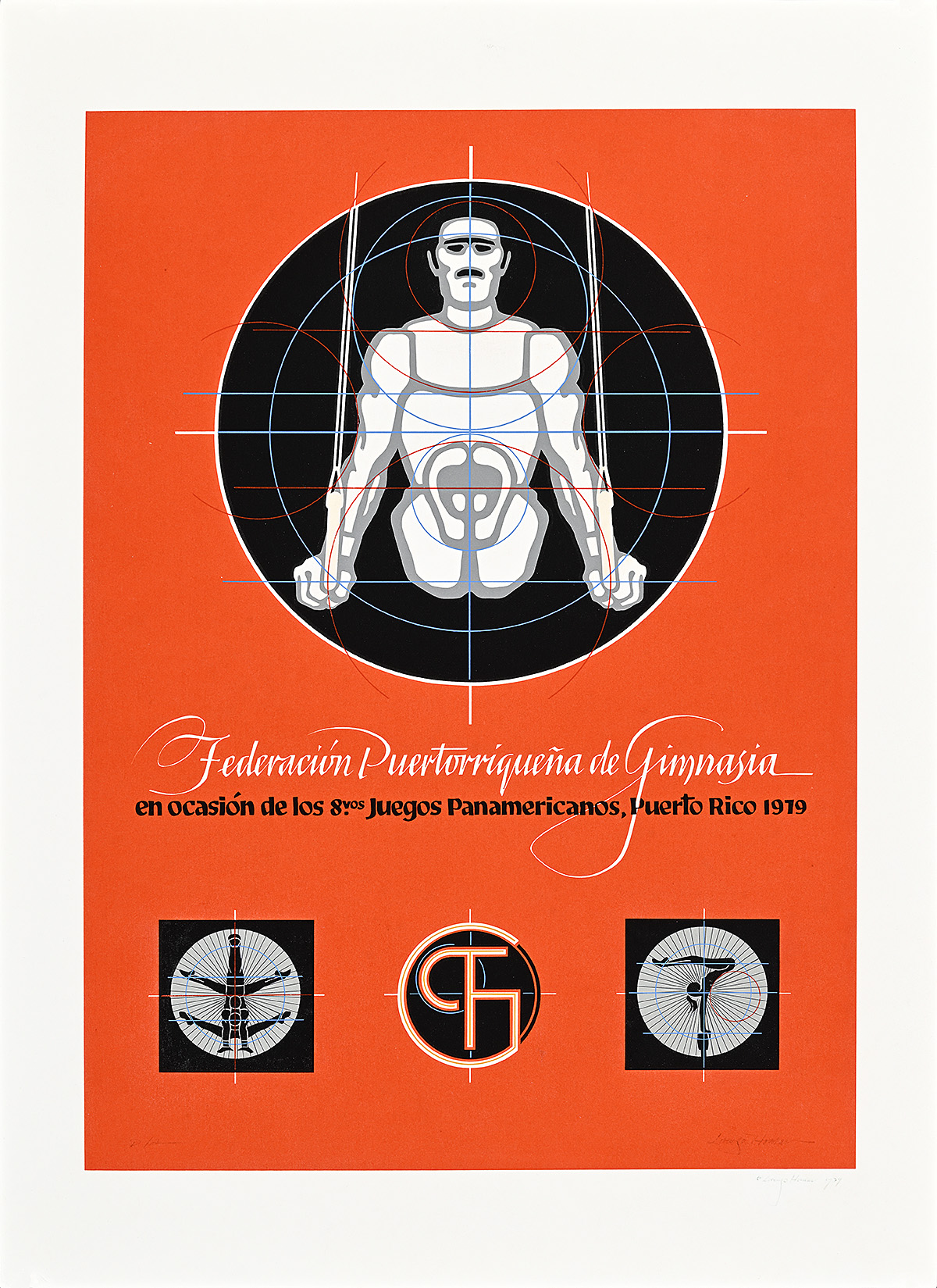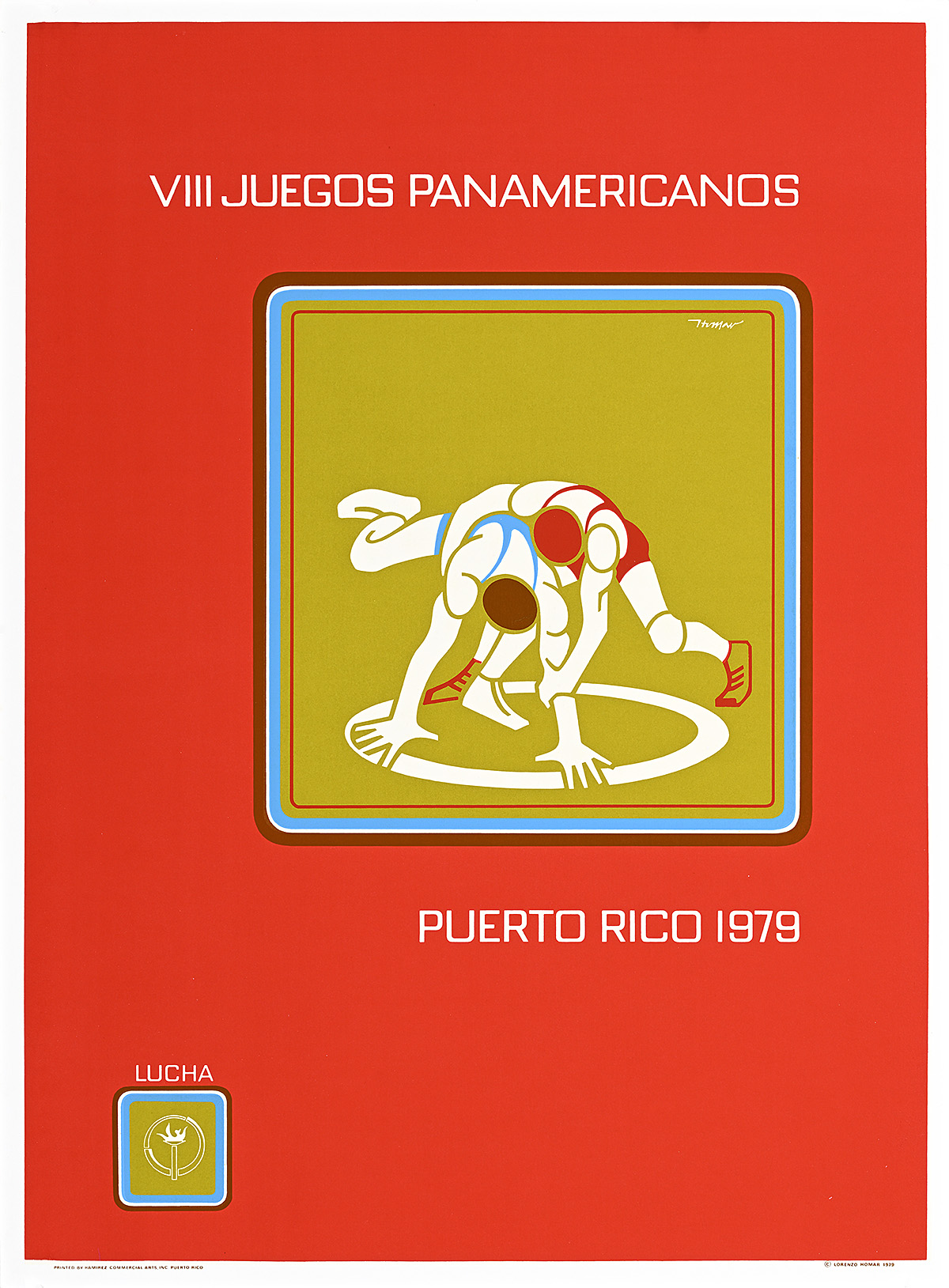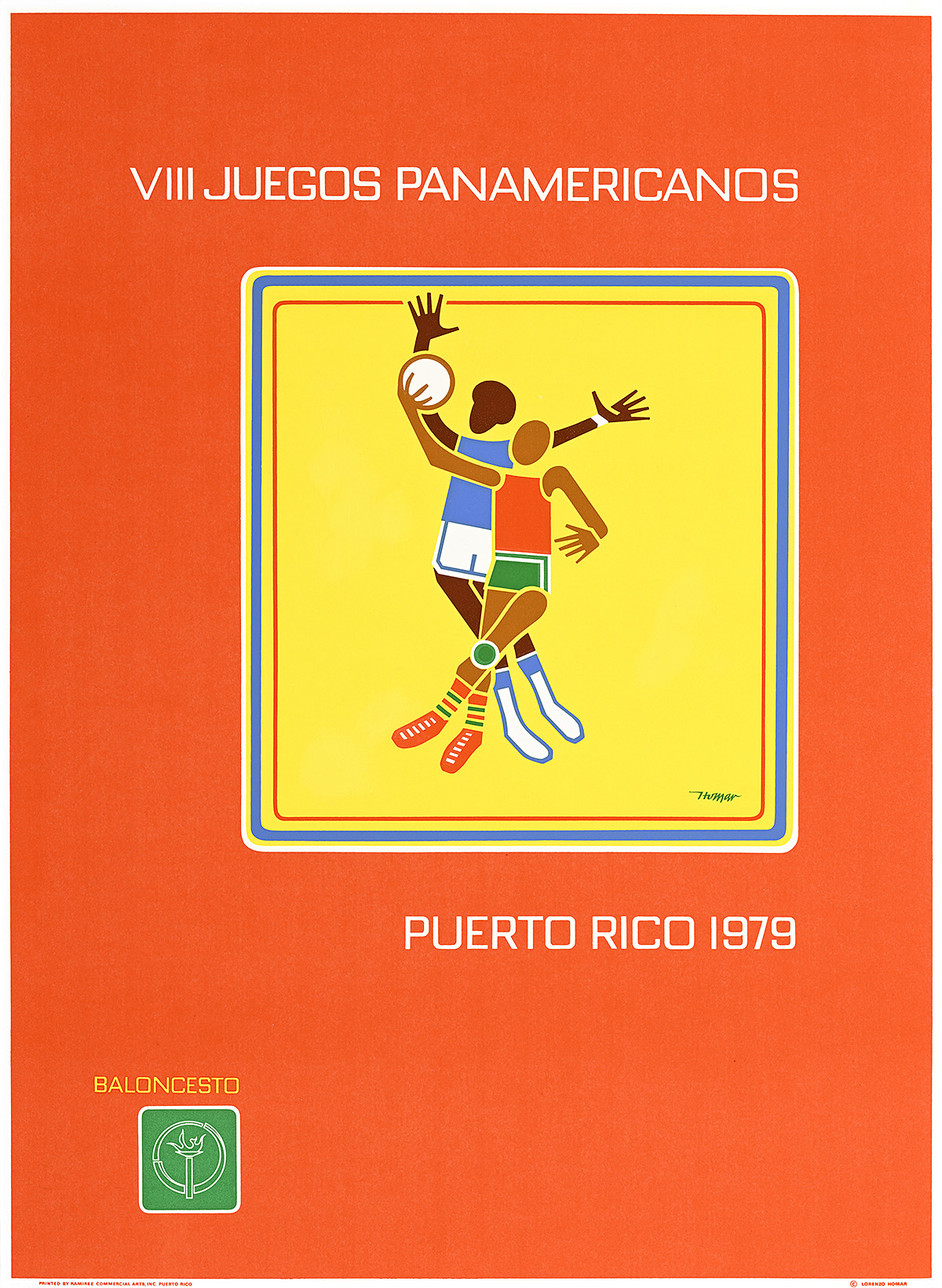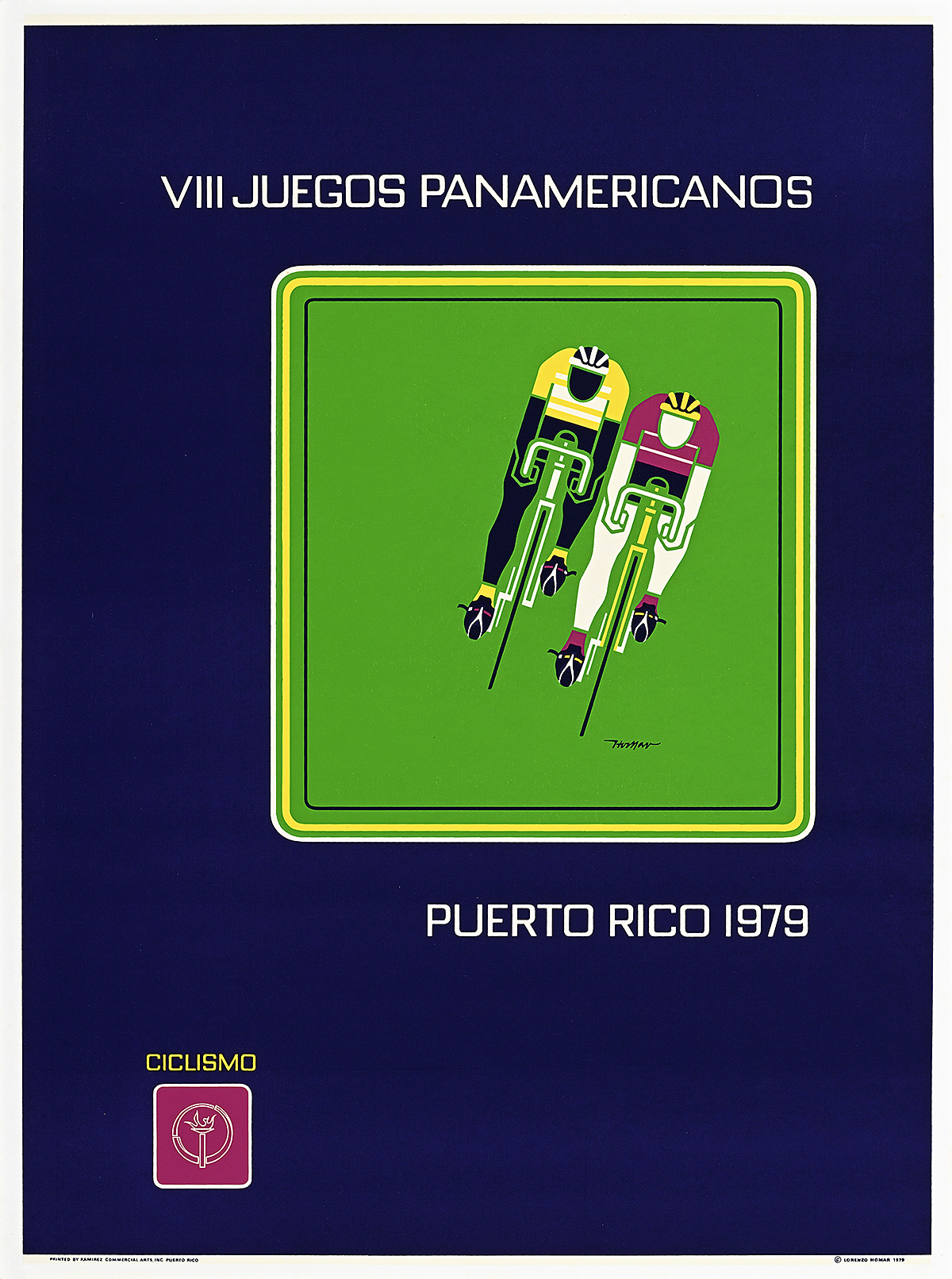Puerto Rico in Print: The Posters of Lorenzo Homar
Lorenzo Homar was a pioneering printmaker, poster designer, calligrapher, painter, illustrator, caricaturist, and designer of costumes, jewelry, and theater sets. Active from the 1950s through the 1990s, his impact and influence as a teacher of poster design and printmaking in Latin America is equaled by few. In the wake of the first democratic elections in Puerto Rico, Homar worked within various cultural institutions overseen by the government to promote local theater, literature, athletic events, music, dance, and art. This work reflects the complex history of the island, encompassing elements of Taíno, Spanish, and African cultures as well as the rising tensions between tradition and modernity. His influence is so extensive that today he is known as the father of the Puerto Rican poster.
Puerto Rico had been a Spanish colony since the late 15th century. While there were several attempts to achieve national independence over the subsequent centuries, it was not until the late 1880s that serious discussions began with the Spanish parliament over the idea of an autonomous government for the island. Although the 1898 election of delegate Luis Muñoz Rivera led to the establishment of a Puerto Rican parliament, the simultaneous eruption of the Spanish-American war put further efforts toward independence on hold. On December 10 of that year, Spain was forced to grant independence to Cuba and cede Puerto Rico and Guam to the United States, making them both unincorporated U.S. territories.
The United States had little understanding of Puerto Rican culture, history, or values, and attempted to Americanize the island through a number of oppressive measures, including making English the official language. In response to these efforts and in a bid for independence, several nationalist groups formed and, in 1922, founded the official Nationalist Party. The 1930s was a period of turmoil and rebellion against the U.S. occupation of the island, and witnessed the largest of many sugarcane workers’ strikes in 1934, the murder of four nationalists at the Rio Piedras Massacre the following year, and the political assassination of Chief of Police Francis E. Riggs in 1936. Leading nationalists such as Pedro Albizu Campos, poets Clemente Soto Vélez and Juan Antonio Corretjer, and other prominent figures, were arrested and convicted of sedition. This complex political situation only became more divided in 1938, when Luis Muñoz Marín formed the Popular Democratic Party (PPD) that openly favored reform within the colonialist system. Muñoz Marín would become the first democratically elected governor of Puerto Rico in 1948.
Inspired by the New Deal policies introduced by President Roosevelt in the United States during the 1930s, Muñoz Marín implemented Operation Bootstrap in 1947, a series of economic and social reforms meant to transform Puerto Rico from an agrarian society into an industrial one. The Muñoz Marín government brought about tremendous political, economic, and social reform while simultaneously suppressing efforts to achieve independence. On October 30, 1950, nationalist uprisings took place in the towns of San Juan, Ponce, Mayagüez, Arecibo, Naranjito, Jayuya, and Utuado that were immediately crushed by the U.S. military, the Puerto Rican National Guard, and the island’s police. In 1952, these government reforms expanded to include Operation Serenity that emphasized bringing international cultural opportunities to the island as well as celebrating the artistic accomplishments of Puerto Rico. This atmosphere of tension, potential social and cultural change, and a call for independence were among the factors that enticed Homar to move back to Puerto Rico from the United States in 1950. The majority of his subsequent posters were created for government initiatives, acting as a mirror of contemporary Puerto Rican politics while establishing him as one of the most influential poster designers of the era.
All posters and maquettes are part of the Poster House Permanent Collection and come from the estate of Lorenzo Homar.
Whenever feasible, Poster House reuses materials from previous shows to drive sustainable practice.
Large text and Spanish translation are available via the QR code and at the Info Desk.
Guías con letra grande y la traducción al español están disponibles en atención al público y a través del código QR.
This program is supported, in part, by public funds from the New York City Department of Cultural Affairs in partnership with the City Council, and the New York State Council on the Arts (NYSCA).

